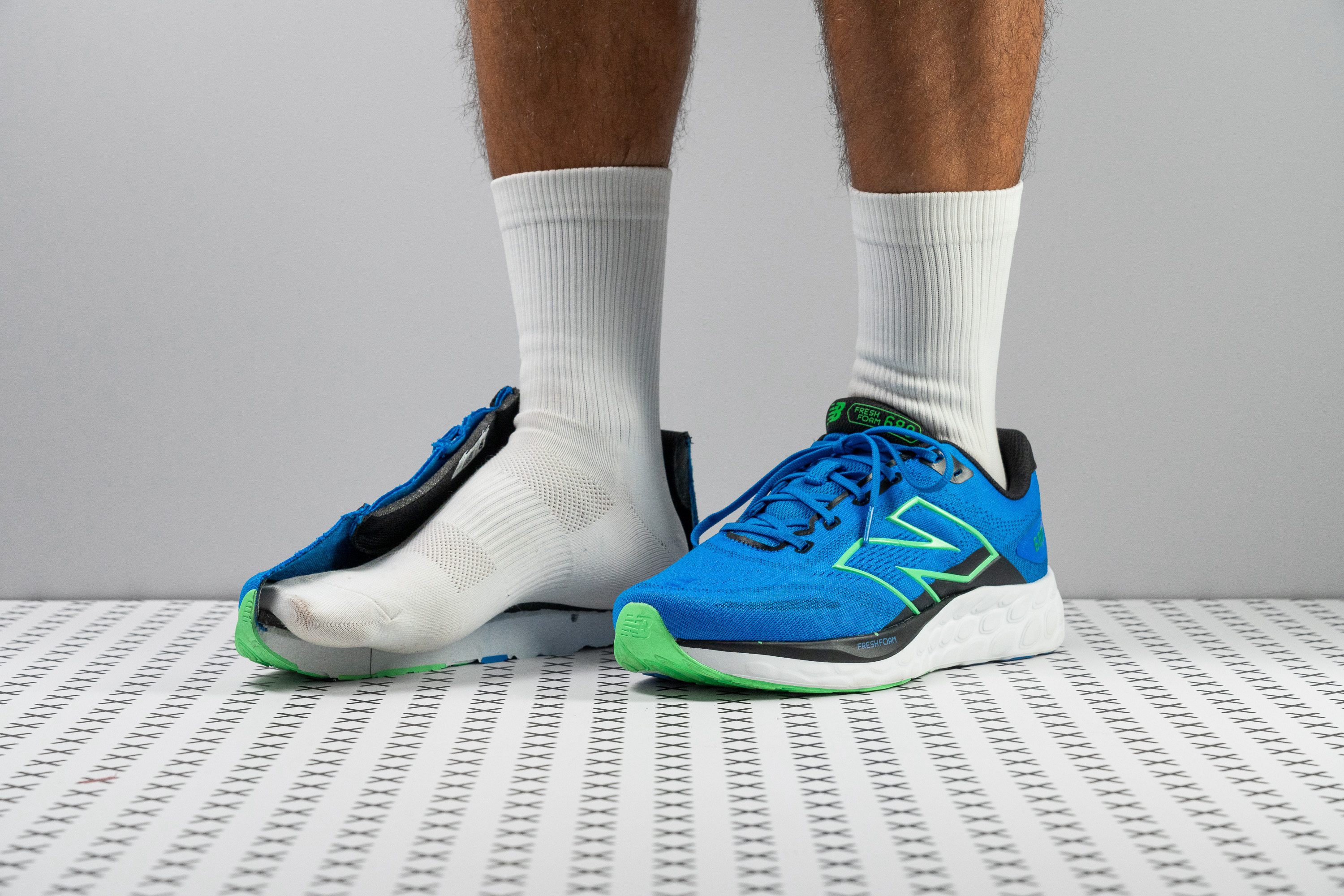Our verdict
Pros
- Highly breathable upper
- Exceptionally durable
- Outstanding value
- Optimal weight-to-cushioning ratio
- Comfortable tongue
- Fits all footstrikes
- Ready for daily wear
- Fresh Foam midsole
- Effective lacing system
Cons
- Not for speedwork
- Limited to neutral runners
- Limited to neutral runners
Audience verdict
- Top 8% most popular running shoes
Comparison
The most similar running shoes compared
+ + Add a shoe | |||||
|---|---|---|---|---|---|
| Audience score | 84 Good! | 89 Great! | 93 Superb! | 80 Good! | |
| Price | £110 | £120 | £130 | £120 | |
| Pace | Daily running | Daily running | Daily runningTempo | Daily runningTempo | |
| Shock absorption | Moderate | High | High | High | |
| Energy return | Moderate | Low | High | Moderate | |
| Traction | High | Moderate | Moderate | Moderate | |
| Arch support | Neutral | Neutral | Neutral | Neutral | |
| Weight lab Weight brand | 9.2 oz / 261g 9.5 oz / 268g | 9.7 oz / 274g 9.5 oz / 270g | 7.9 oz / 223g 7.9 oz / 224g | 9.5 oz / 269g 9.7 oz / 275g | |
| Lightweight | ✗ | ✗ | ✓ | ✗ | |
| Drop lab Drop brand | 7.8 mm | 10.5 mm 5.0 mm | 8.0 mm 6.5 mm | 6.7 mm 6.0 mm | |
| Strike pattern | Mid/forefoot | Heel | HeelMid/forefoot | Mid/forefoot | |
| Size | Slightly small | True to size | True to size | Slightly small | |
| Midsole softness | Soft | Soft | Balanced | Soft | |
| Difference in midsole softness in cold | Normal | Normal | Small | Normal | |
| Toebox durability | Good | Bad | Bad | Bad | |
| Heel padding durability | Good | Decent | Good | Bad | |
| Outsole durability | Good | Good | Good | Decent | |
| Breathability | Breathable | Breathable | Breathable | Breathable | |
| Width / fit | Medium | Medium | Medium | Medium | |
| Toebox width | Medium | Medium | Medium | Medium | |
| Stiffness | Flexible | Moderate | Flexible | Moderate | |
| Torsional rigidity | Flexible | Stiff | Stiff | Moderate | |
| Heel counter stiffness | Moderate | Stiff | Moderate | Moderate | |
| Rocker | ✗ | ✗ | ✓ | ✗ | |
| Heel lab Heel brand | 35.4 mm | 40.7 mm 40.0 mm | 36.1 mm 38.5 mm | 35.2 mm 37.0 mm | |
| Forefoot lab Forefoot brand | 27.6 mm | 30.2 mm 35.0 mm | 28.1 mm 32.0 mm | 28.5 mm 31.0 mm | |
| Widths available | NormalWideX-Wide | NormalWide | NormalWide | NormalWide | |
| Orthotic friendly | ✓ | ✓ | ✓ | ✓ | |
| Season | SummerAll seasons | SummerAll seasons | SummerAll seasons | SummerAll seasons | |
| Removable insole | ✓ | ✓ | ✓ | ✓ | |
| Ranking | #244 Bottom 34% | #104 Top 28% | #4 Top 2% | #312 Bottom 16% | |
| Popularity | #29 Top 8% | #242 Bottom 35% | #15 Top 4% | #190 Bottom 49% |
Who should buy
We've tested the New Balance 680 v8 and think it's especially great for:
- Beginners or weekend warriors seeking a plush daily trainer that doesn't break the bank.
- Neutral runners looking for a versatile shoe suitable for both easy runs and daily wear.
- Anyone eyeing the luxurious New Balance Fresh Foam X 1080 v13 but needing a more affordable alternative—the 680 v8 is the easy-on-the-wallet version!
- Marathoners wanting a durable, cost-effective addition to their rotation for recovery days.
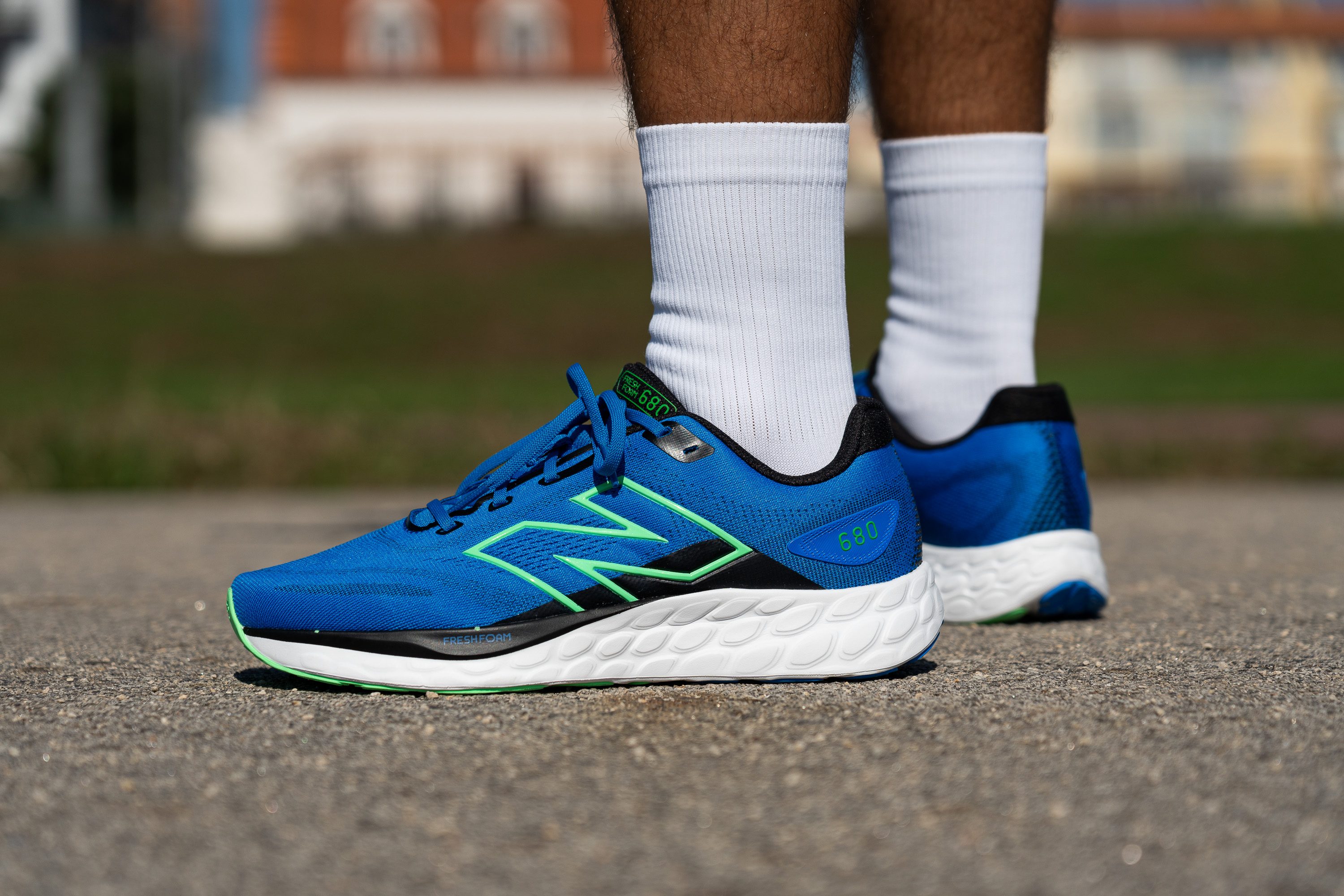
Who should NOT buy
We think the New Balance 680 v8 caters to a broad audience but the midsole may feel overly plush for some runners. If that's you, we suggest exploring alternatives like the Nike Downshifter 13 for a balanced feel or the Adidas Supernova 3 for a firmer experience.
From our evaluation, we do not recommend the 680 v8 for runners who require stability—its higher midsole and lack of stability features render it unsuitable for those without a perfect neutral form. Instead, we believe there are better choices, such as the ASICS GT 1000 13 or the Saucony Tempus, which are designed to provide the necessary support for those with stability concerns.
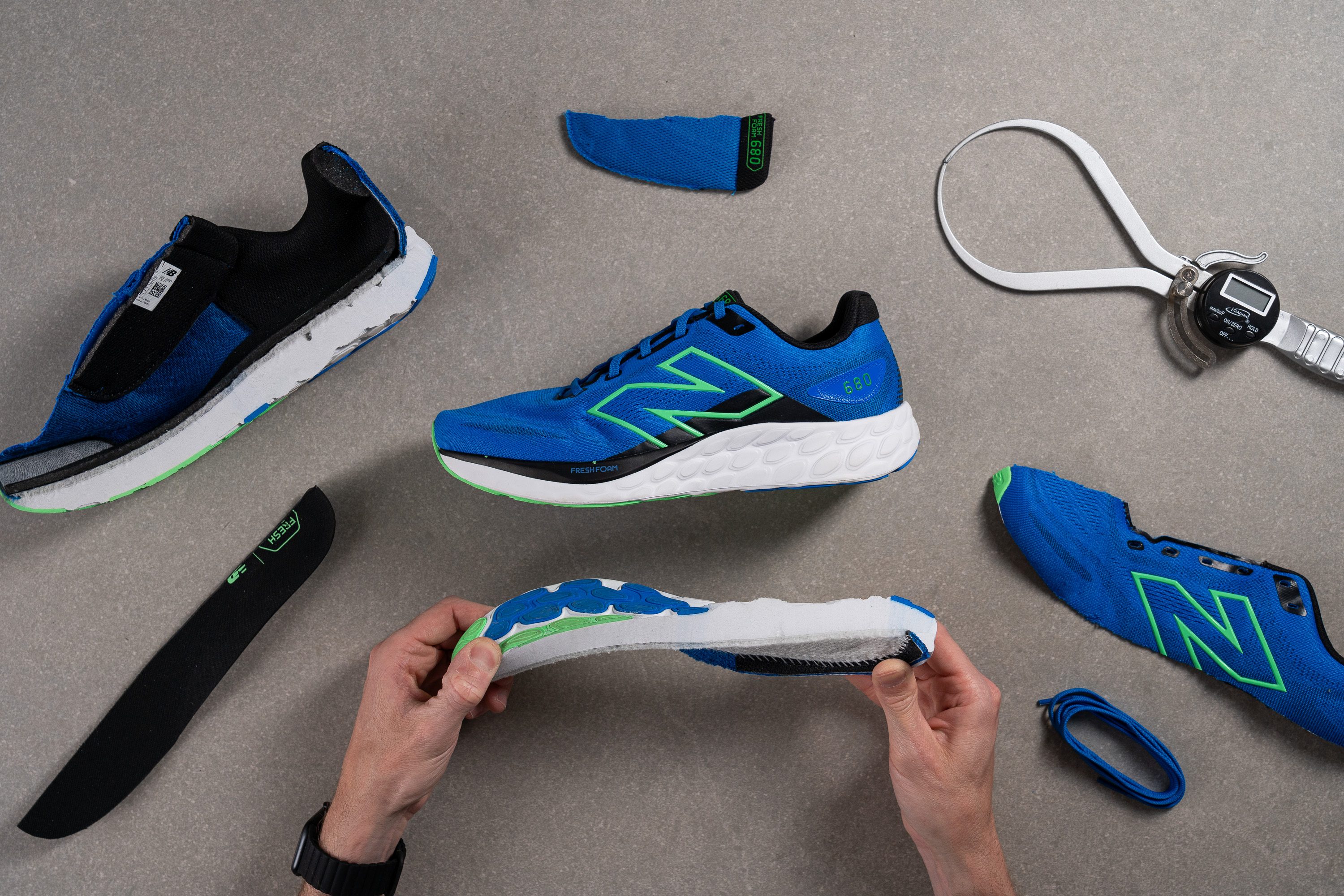
Cushioning
Shock absorption
The New Balance Fresh Foam 680 v8 sets out to be a dependable daily trainer, and our lab results confirm that. With 124 SA of cushioning, it delivers solid impact protection—right in line with what we expect from this category.
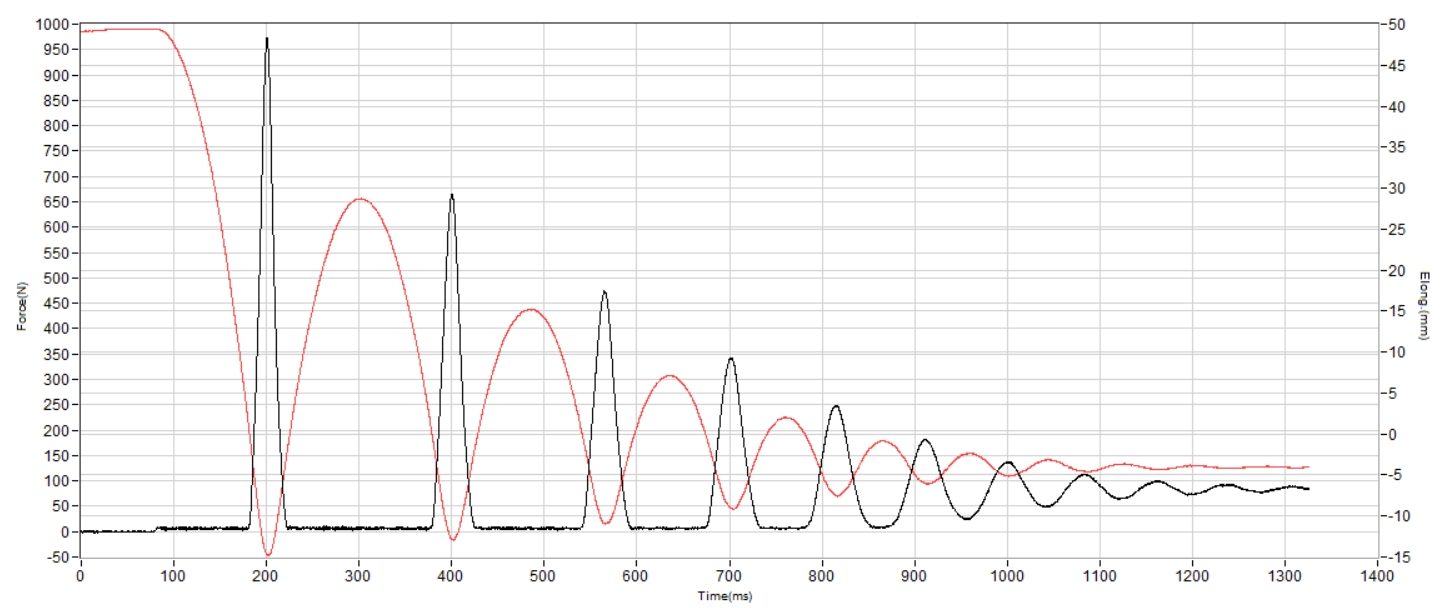
| Fresh Foam 680 v8 | 124 SA |
| Average | 129 SA |
Energy return
One of the welcome surprises of the Fresh Foam 680 v8 is its energy return. While it won’t break any records, we measured 61.2% in the heel and 64.6% in the forefoot, both respectable numbers that earn praise considering the budget-friendly price.
| Fresh Foam 680 v8 | 61.2% |
| Average | 58.5% |
Heel stack
If you're searching for a budget-friendly daily trainer that doesn’t skimp on foam underfoot, the 680 is a standout choice.
Coming at 35.4 mm in our digital callipers, it offers one of the best cushioning-to-price ratios on the market!
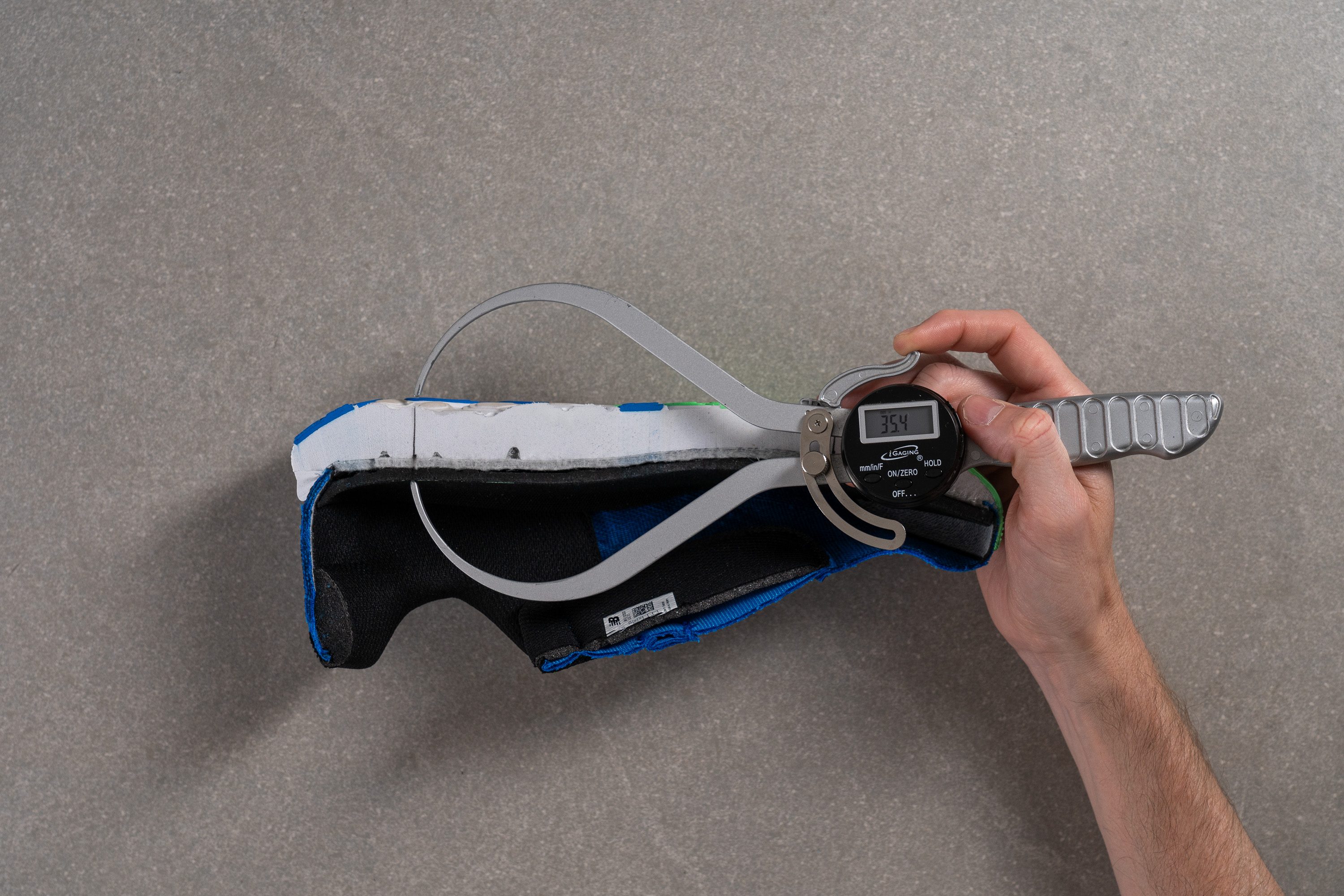
| Fresh Foam 680 v8 | 35.4 mm |
| Average | 34.8 mm |
Forefoot stack
The forefoot design in the 680 v8 also boasts a generous cushioning of 27.6 mm, offering more foam underfoot compared to many rivals. This makes it a good option for midfoot and forefoot strikers looking for that extra bit of comfort, and it's definitely a solid pick for long runs.
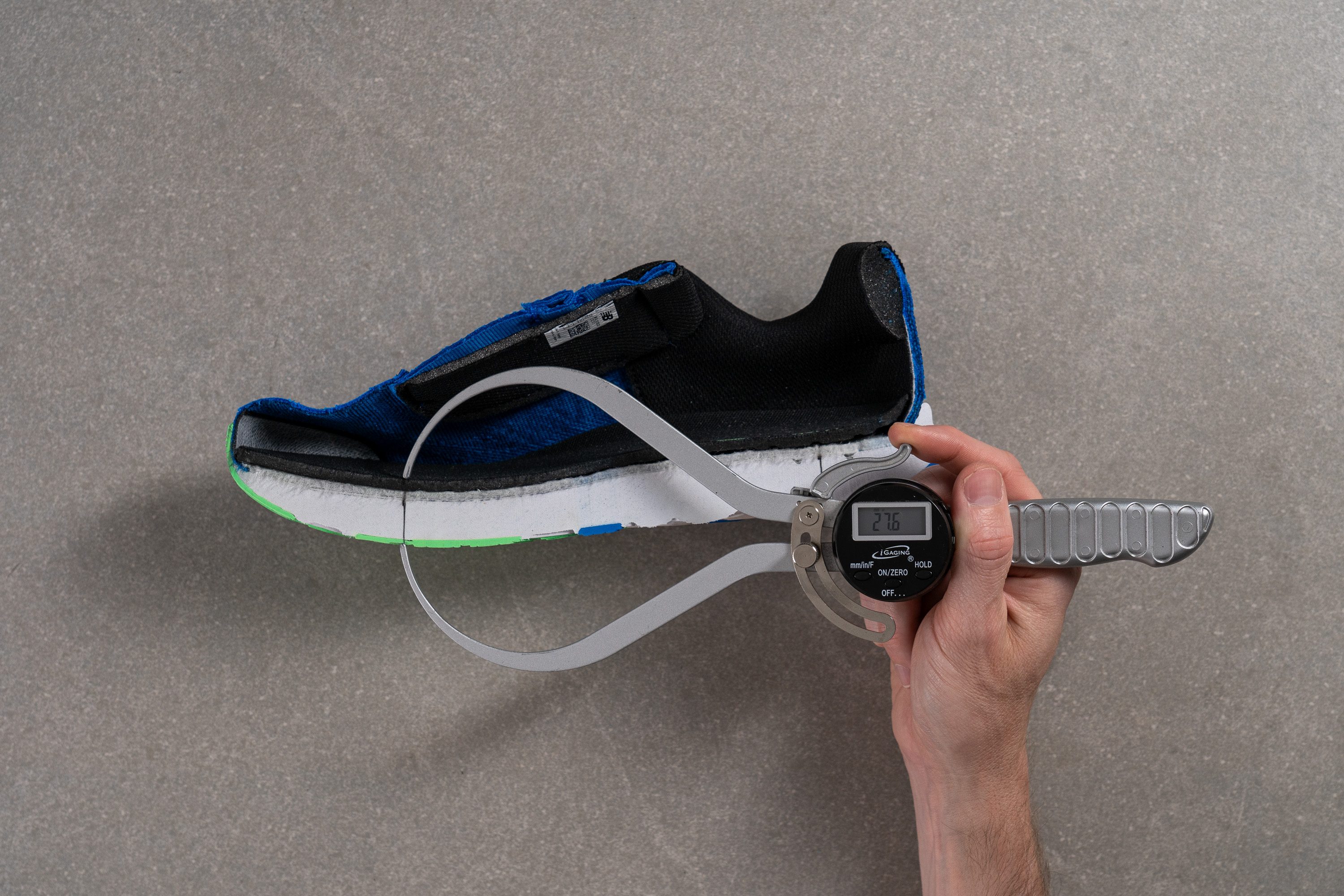
| Fresh Foam 680 v8 | 27.6 mm |
| Average | 26.2 mm |
Drop
From our perspective, the 8 mm drop claimed by New Balance is ideal for a beginner-friendly shoe, offering a good balance for heel, midfoot, and forefoot strikers alike.
In our lab tests, we measured a 7.8 mm offset—remarkably close to the official specs.
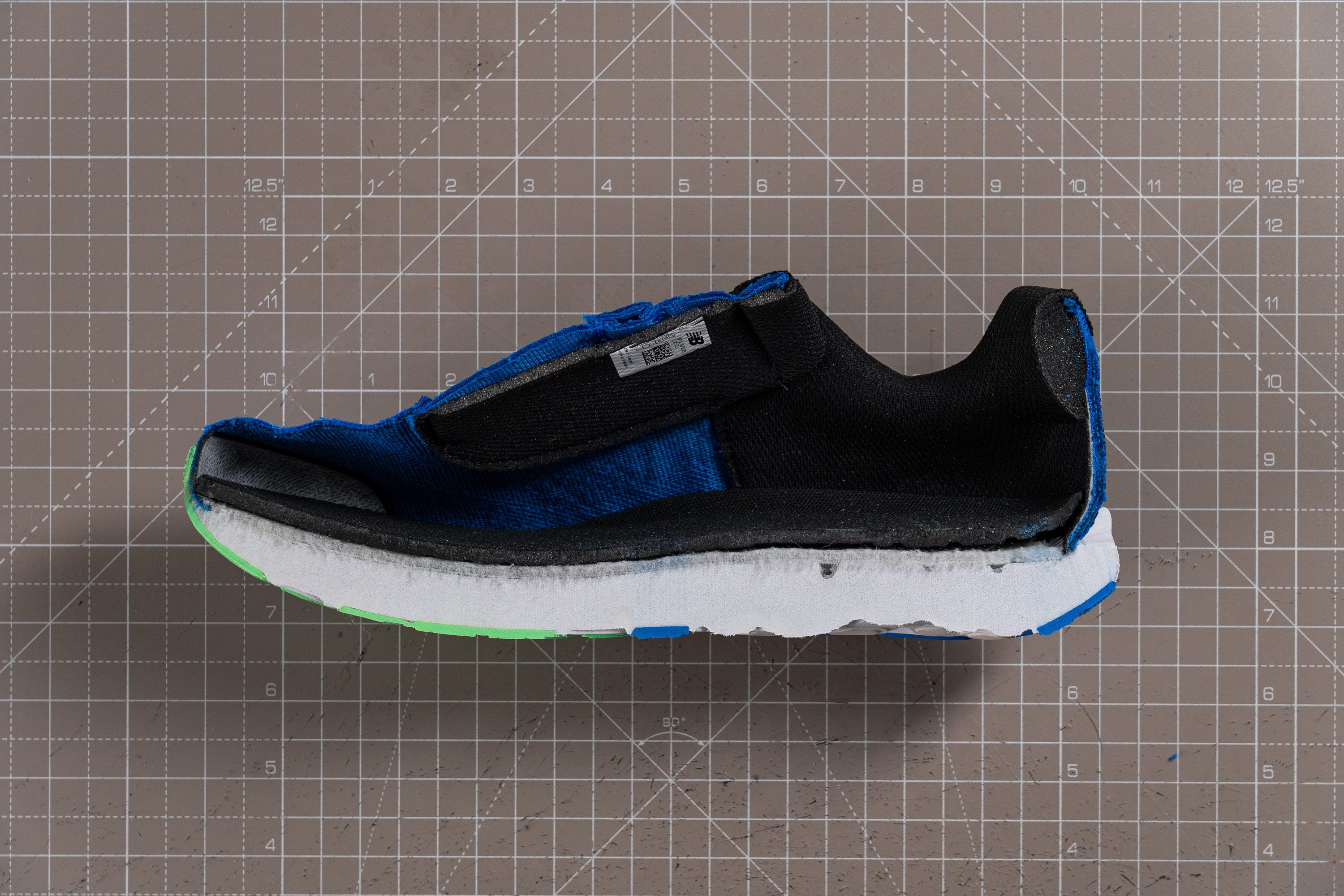
| Fresh Foam 680 v8 | 7.8 mm |
| Average | 8.6 mm |
Midsole softness
Unlike most entry-level shoes with basic EVA midsoles, the 680 v8 impresses with its Fresh Foam—a foam once exclusive to New Balance's high-end trainers.
Advances in production techniques have reduced the cost of Fresh Foam, enabling New Balance to incorporate it into more affordable models like the 680 v8. Meanwhile, their pricier models like the More v4 now feature Fresh Foam X, positioning the original Fresh Foam as a cost-effective yet competitive option in shoes under £100.

Our durometer test confirmed its softness, recording just 16.3 HA—significantly softer than many competitors.

| Fresh Foam 680 v8 | 16.3 HA |
| Average | 20.4 HA |
Size and fit
Size
New Balance Fresh Foam 680 v8 fits slightly small (98 votes).
Width / Fit
During all this lab testing, we've noted that New Balance consistently opts for a conservative, risk-averse design with the 680, and that includes the toebox design.
Our initial measurement at the widest part registered 95.3 mm, which is very much in line with the average dimensions typically seen. Again, this reaffirms the brand's strategy to maintain a middle-of-the-road approach in the 680 v8.
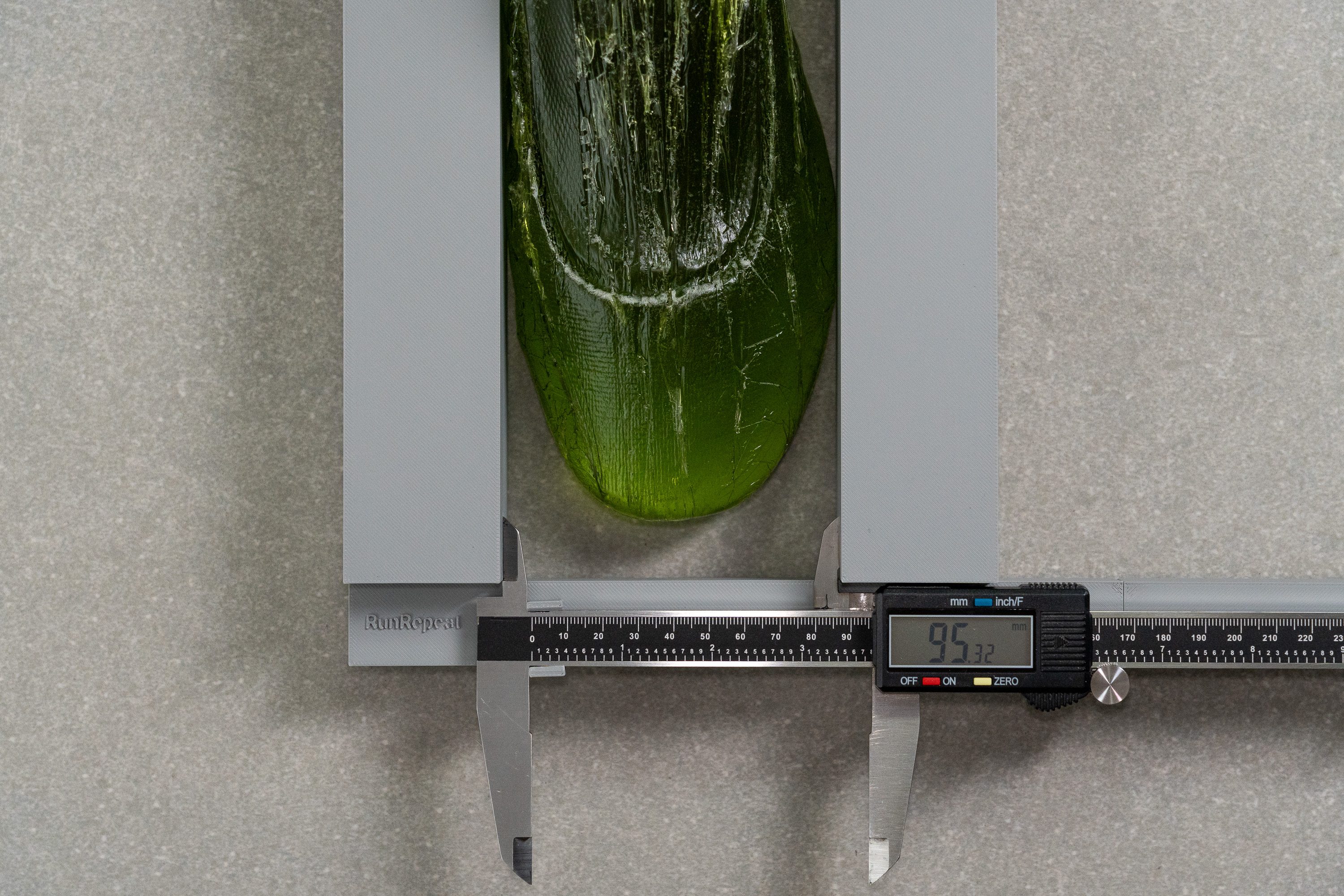
| Fresh Foam 680 v8 | 95.3 mm |
| Average | 95.1 mm |
Toebox width
The toebox isn't super-pointy—yet it's also far from being a close cousin of any Altra. It sits comfortably in the middle, just like we previously noted, and we validated it with another measurement at 72.6 mm.
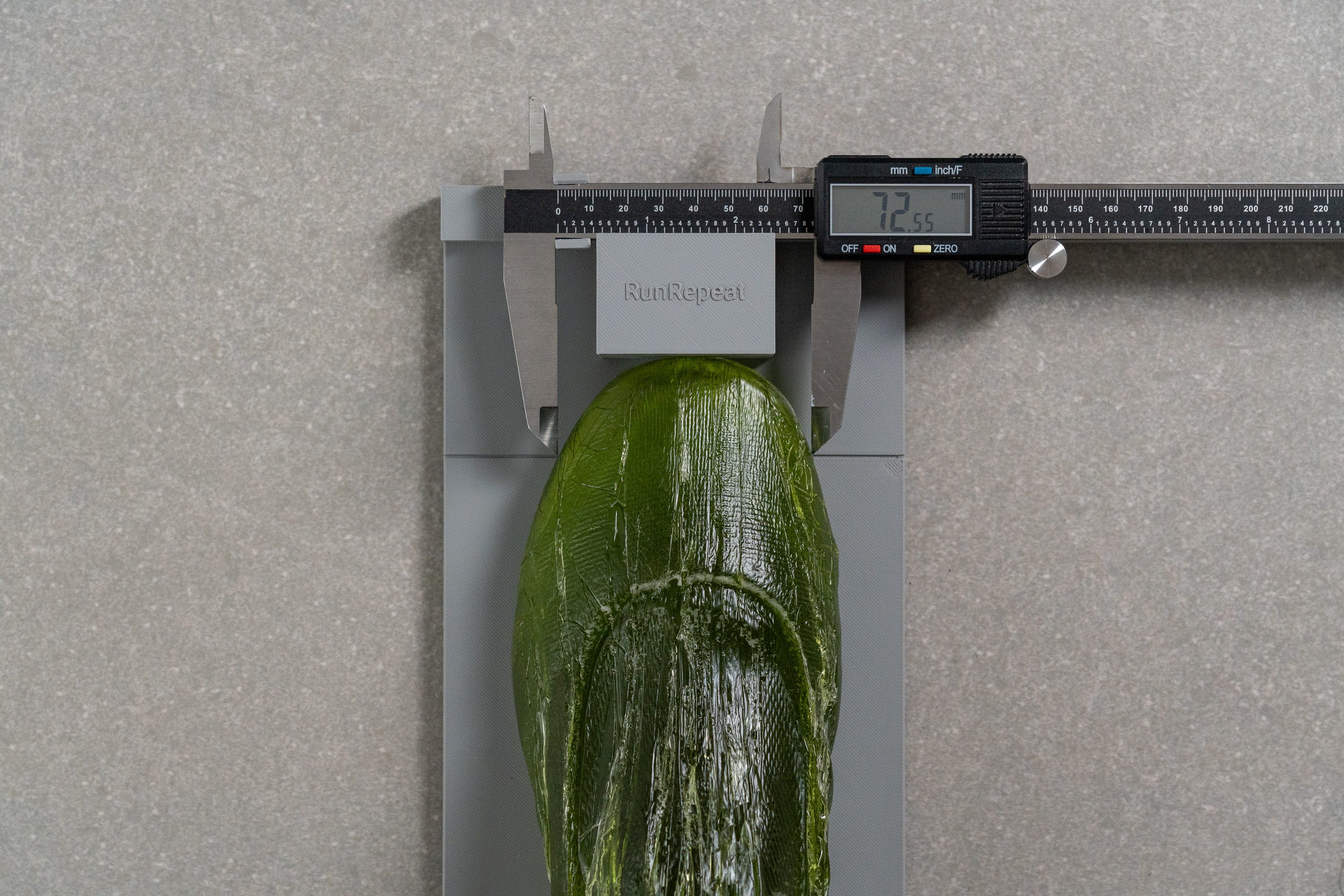
| Fresh Foam 680 v8 | 72.6 mm |
| Average | 73.2 mm |
Toebox height
There are two additional aspects to consider with the New Balance 680 v8.
First, we think the overall volume of the shoe is sufficient at 26.2 mm, although it could be slightly higher if New Balance had consulted us. Second, while New Balance offers the shoe in multiple widths, availability varies by market
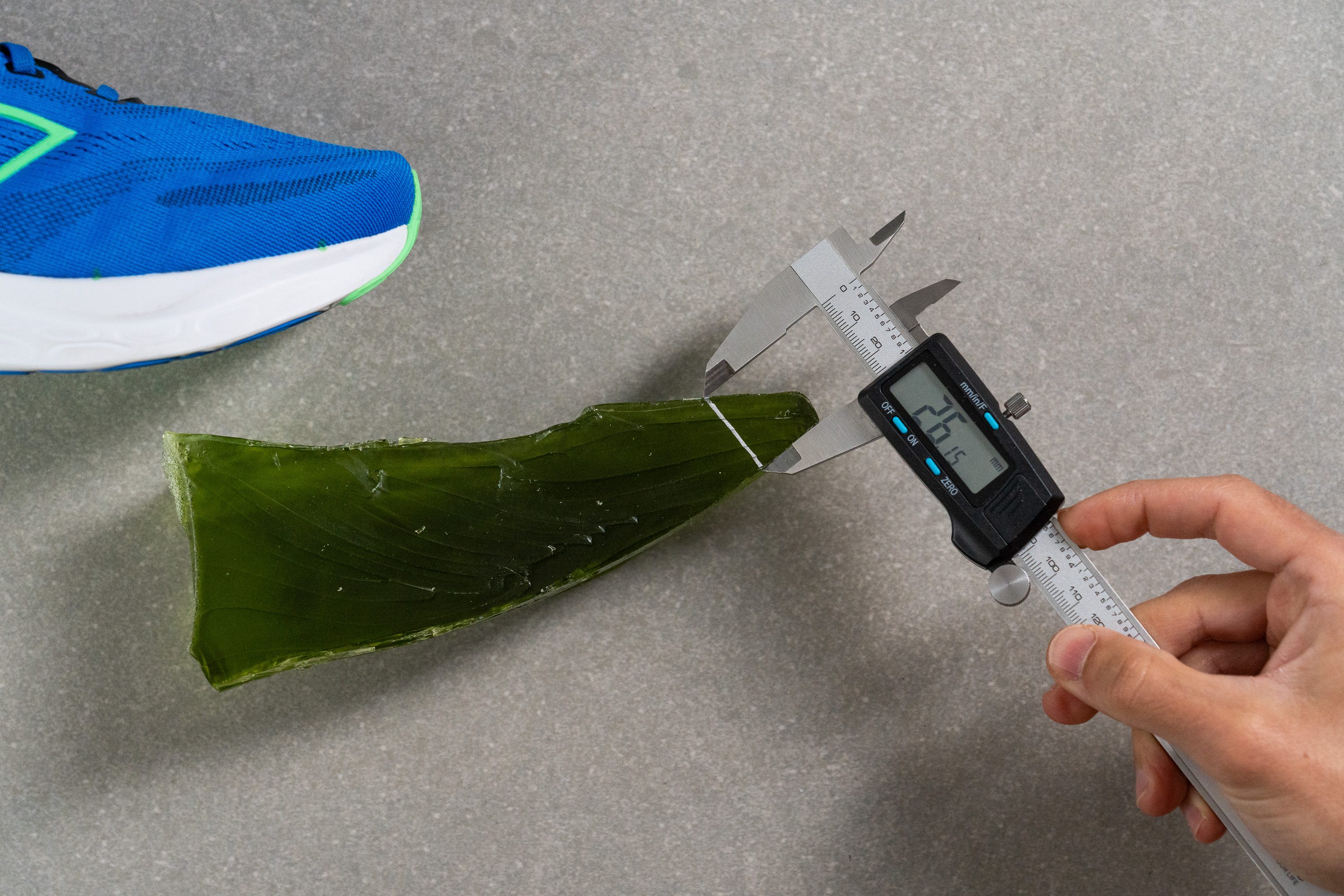
| Fresh Foam 680 v8 | 26.2 mm |
| Average | 27.1 mm |
Traction / Grip
Traction test
It may not have a full-length rubber outsole but the New Balance Fresh Foam 680 v8 has a pretty solid forefoot grip.
Showing a friction score of 0.51 in our SATRA TM144 grip test, the shoe proved to have enough bite for both dry and wet roads.
| Fresh Foam 680 v8 | 0.51 |
| Average | 0.48 |
Outsole design
The outsole of the Fresh Foam 680 v8 is built for durability and grip, featuring a colourful mix of green and blue rubber pods laid out in the honeycomb-like pattern that New Balance has been using in the last few yeras.
We're also glad to find that New Balance went for good coverage here, with only a few foam gaps for added flexibility and an uncovered central area.
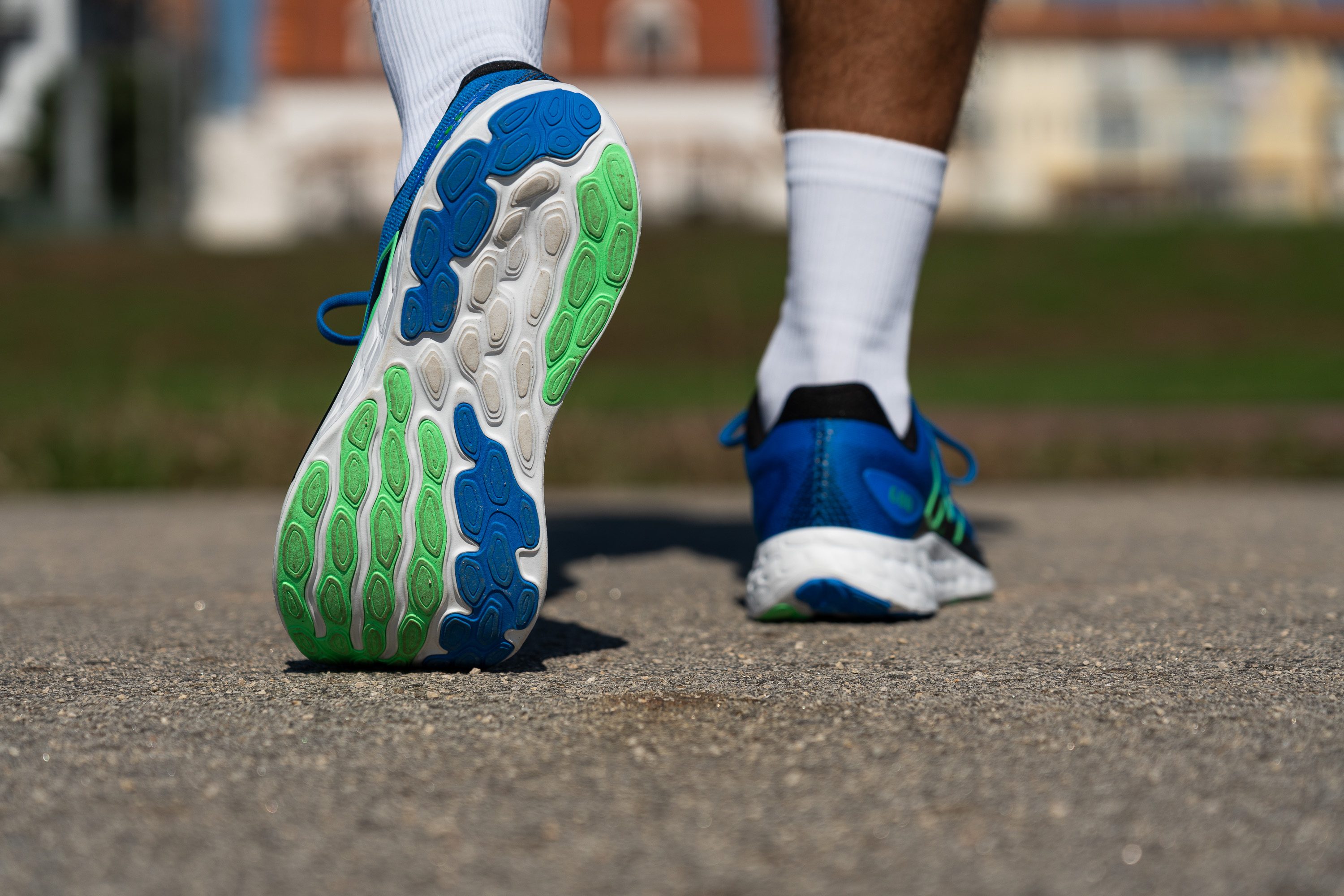
Flexibility / Stiffness
In the lab, the Fresh Foam 680 v8 flexed with minimal effort—only needing 9.0N to reach a 30-degree angle. This impressive flexibility can be attributed to the soft midsole and carefully designed outsole cutouts, and confirms that this is a great shoe for everyday use.
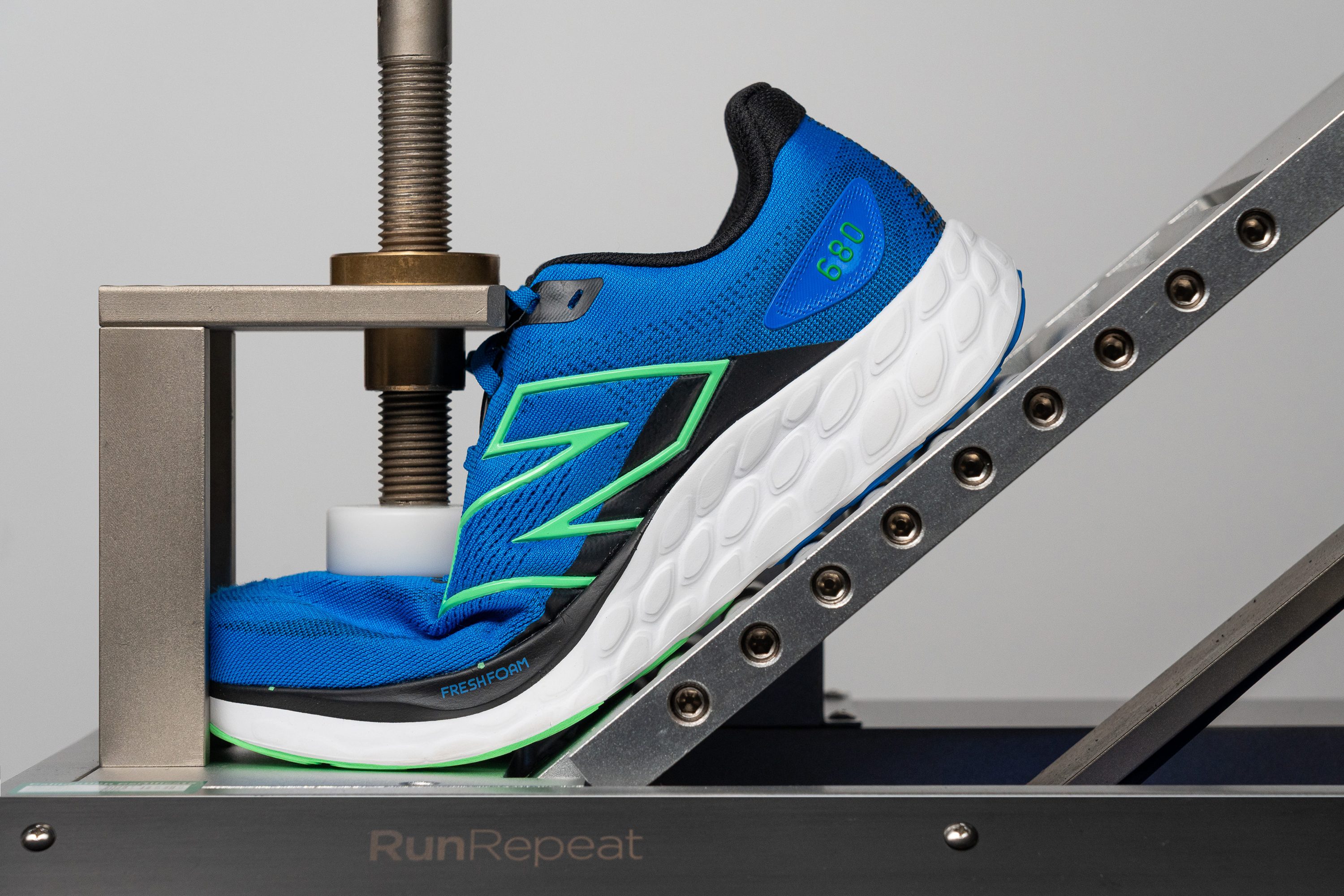
| Fresh Foam 680 v8 | 9.0N |
| Average | 15.3N |
Stiffness in cold (%)
During our latest cold test—20 minutes in the freezer—the 680 v8 displayed notable resilience, stiffening by just 19.5%. This result was unexpectedly good, given the previous cold test outcome.
| Fresh Foam 680 v8 | 20% |
| Average | 33% |
Weight
Fortunately, weight isn’t an issue for this shoe. At just 9.2 oz or 261g, New Balance has done an excellent job keeping it under 10 ounces while still providing ample cushioning underfoot.
This achievement aligns well with the latest 1080, which is also known for being among the lightest premium daily trainers.
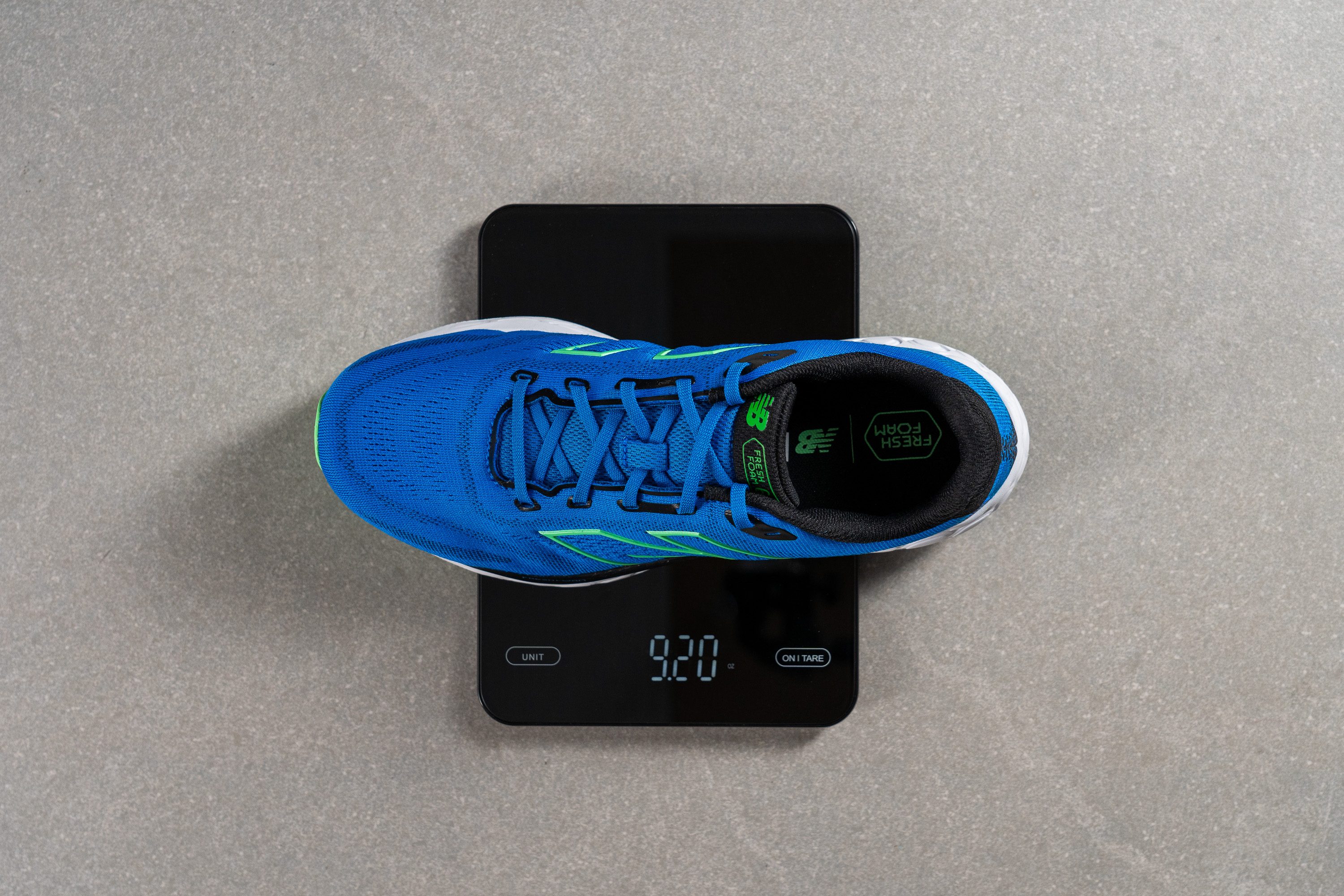
| Fresh Foam 680 v8 | 9.2 oz (261g) |
| Average | 9.3 oz (264g) |
Breathability
In our lab, we can often predict a shoe's ventilation just by inspecting it—but not this time. The engineered mesh upper, though well-constructed, left us curious about its breathability, so we set out to test it.
We started by using our smoke-pumping machine to see how the upper dissipates smoke, and we were pleasantly surprised. While we expected decent ventilation, the shoe exceeded expectations with a perfect 5-out-of-5 score.
This result is impressive because the upper isn't paper-thin, as confirmed by our light test. Instead, it’s quite dense, which made the outcome even more surprising.
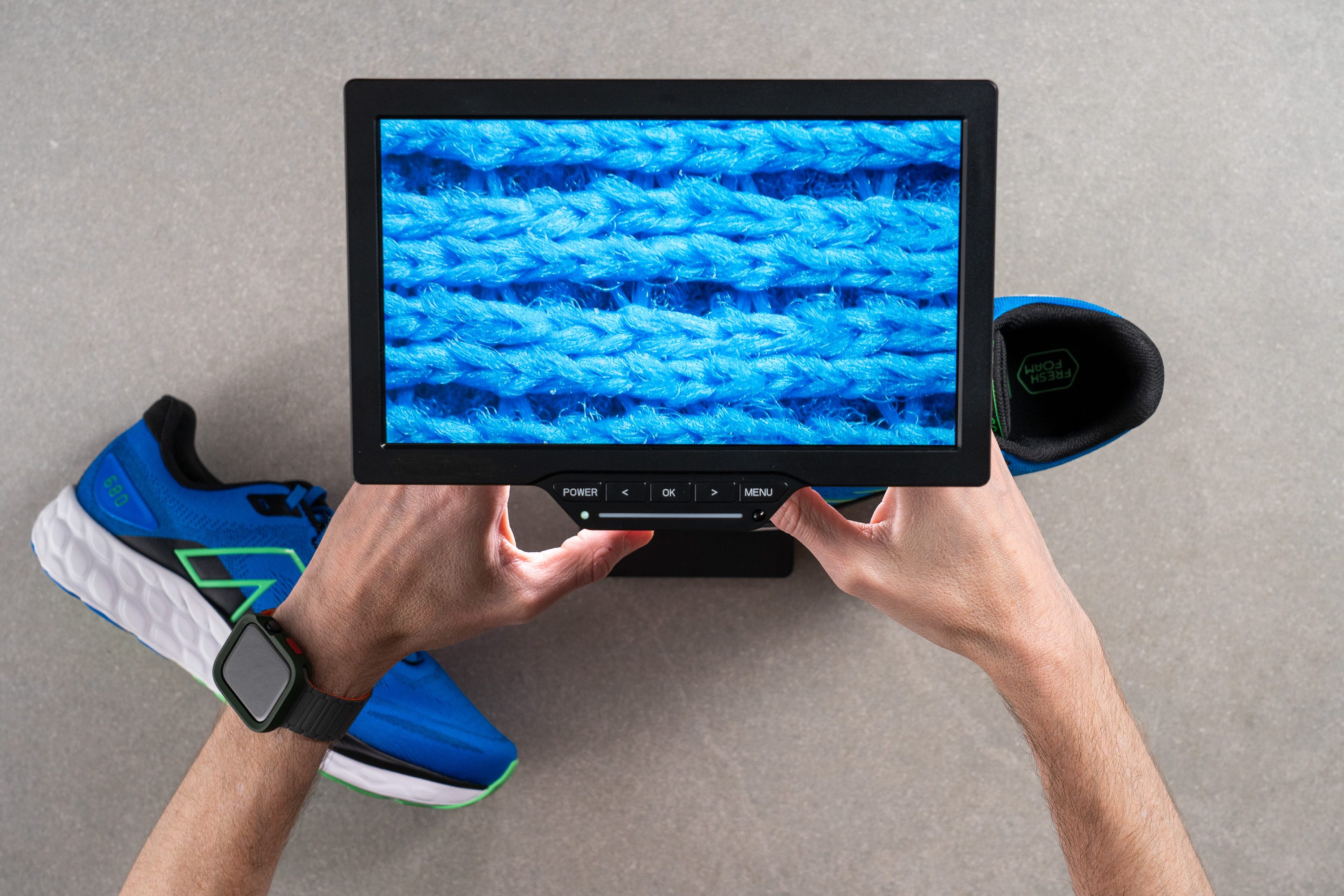
Eager to understand more, we moved to the microscope to examine the upper closely. We found specific spots where hot air escapes, though these vents are different from those in many other shoes.

From our perspective, the upper is a winner in terms of value.
It’s well-built, padded in the heel, mostly seamless, and breathable in the forefoot. That’s exactly what we asked for, and it’s what we got!
| Fresh Foam 680 v8 | 5 |
| Average | 3.7 |
Stability
Lateral stability test
New Balance assigns numbers to their footwear lines, and both the 680 and 1080 are part of the '80' family, which categorises neutral daily trainers. The first digit—6, 8, or 10—indicates the shoe's price tier; higher numbers denote a higher price.
As such, the 680 v8 does not feature any stability assistance, making them unsuitable for pronators. However, we found that neutral runners should find them quite satisfactory and won't face any issues with their design.
Torsional rigidity
Designed specifically for neutral runners, the New Balance 680 avoids a rigid chassis, a choice that significantly enhances underfoot comfort.
Our testing showed that the six-eighty offered little resistance against our hands, and we rated it at 2 out of 5, way below the average.
| Fresh Foam 680 v8 | 2 |
| Average | 3.5 |
Heel counter stiffness
In our evaluation, New Balance took a conservative approach with the heel counter of the shoe, which led to a middle-of-the-road rating of 3 out of 5 from our team.
| Fresh Foam 680 v8 | 3 |
| Average | 2.9 |
Midsole width - forefoot
The 680 v8's light weight can be partially attributed to its streamlined design, specifically crafted to exclude features for pronation support. We confirmed this through measurements we took using our digital calipers, which showed a near-average width of 113.9 mm—perfect for its role in New Balance's lineup.
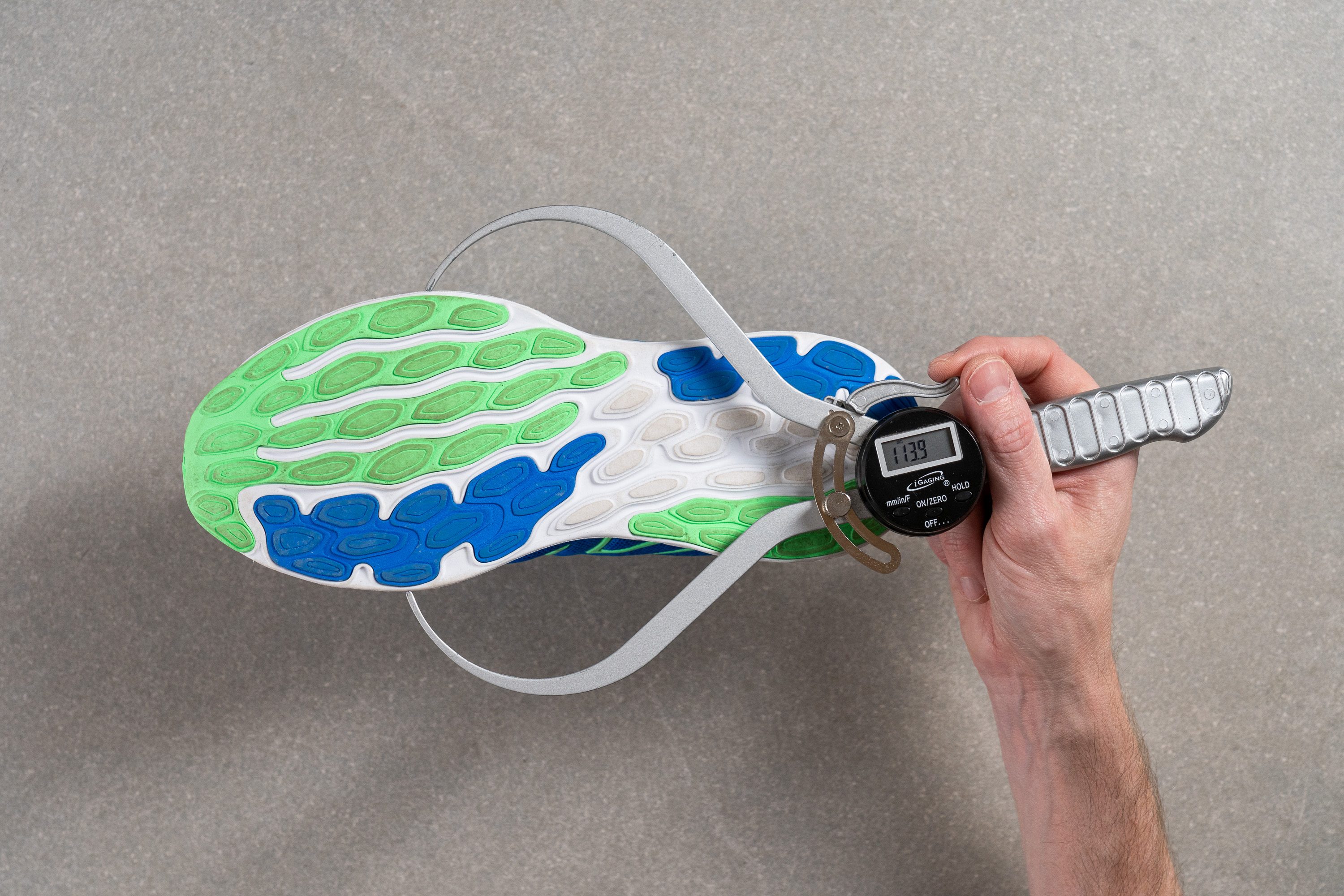
| Fresh Foam 680 v8 | 113.9 mm |
| Average | 114.4 mm |
Midsole width - heel
In the heel area, our measurements revealed a dimension of 89.6 mm—comfortably close to the average, striking a good width for neutral runners who predominantly heel strike. This design ensures the shoe remains streamlined and avoids excessive bulkiness, making it ideal for everyday use.

| Fresh Foam 680 v8 | 89.6 mm |
| Average | 90.7 mm |
Durability
Toebox durability
When uppers block out light, it often signals durability, so we put that to the test by bringing out the Dremel tool for the first time today.
We were thrilled with the results—a remarkable 4 out of 5 rating for a shoe with such effective ventilation. This score is quite impressive, showcasing both resilience and breathability at a wallet-friendly price.
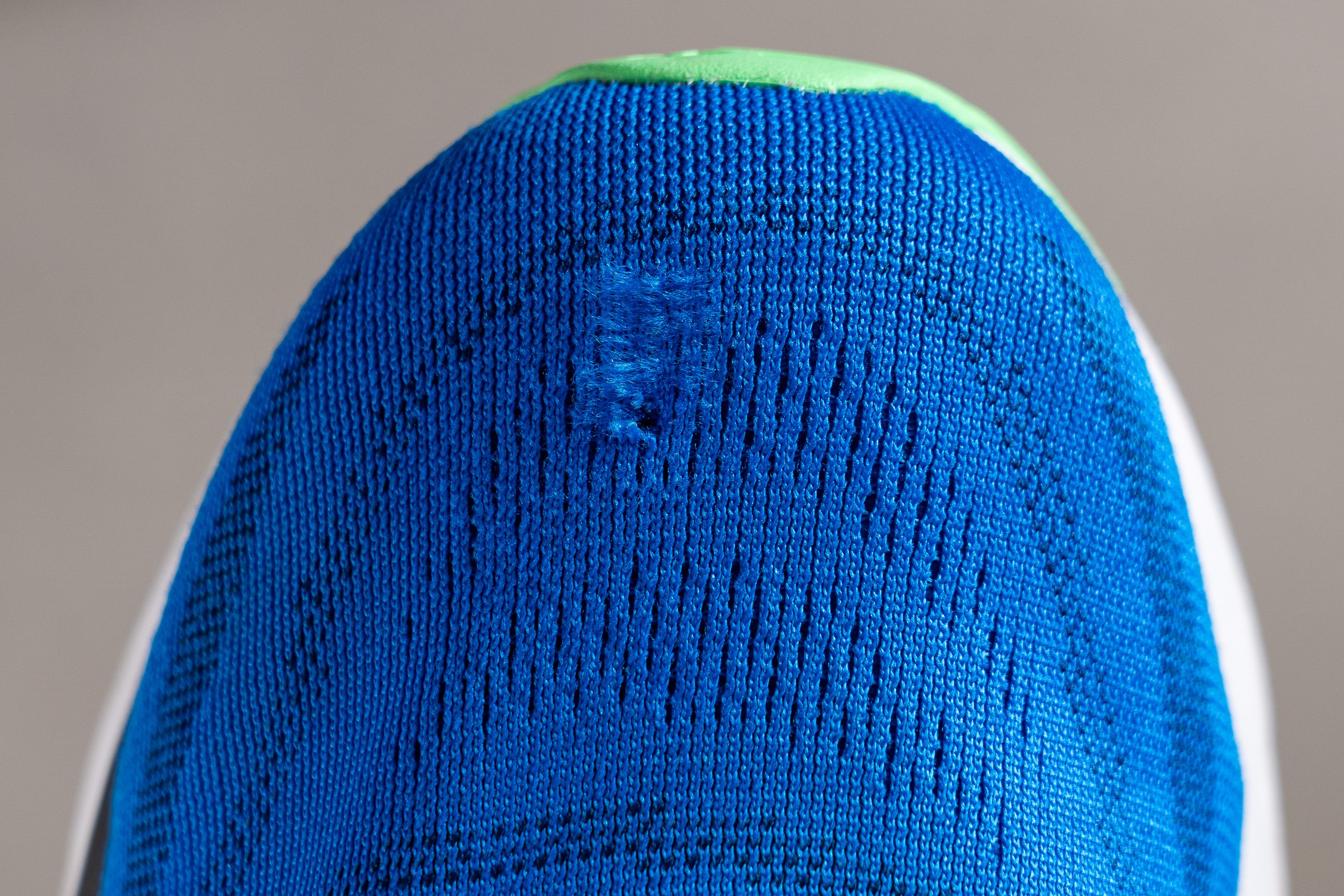
| Fresh Foam 680 v8 | 4 |
| Average | 2.6 |
Heel padding durability
Following our toebox assessment, we shifted focus to evaluate the heel padding in terms of durability—a critical feature for many runners.
We were pleased with the results, as it earned a solid 4 out of 5, surpassing the average scores we typically encounter here in the lab. So far, the 680 v8 continues to impress us with its exceptional performance!
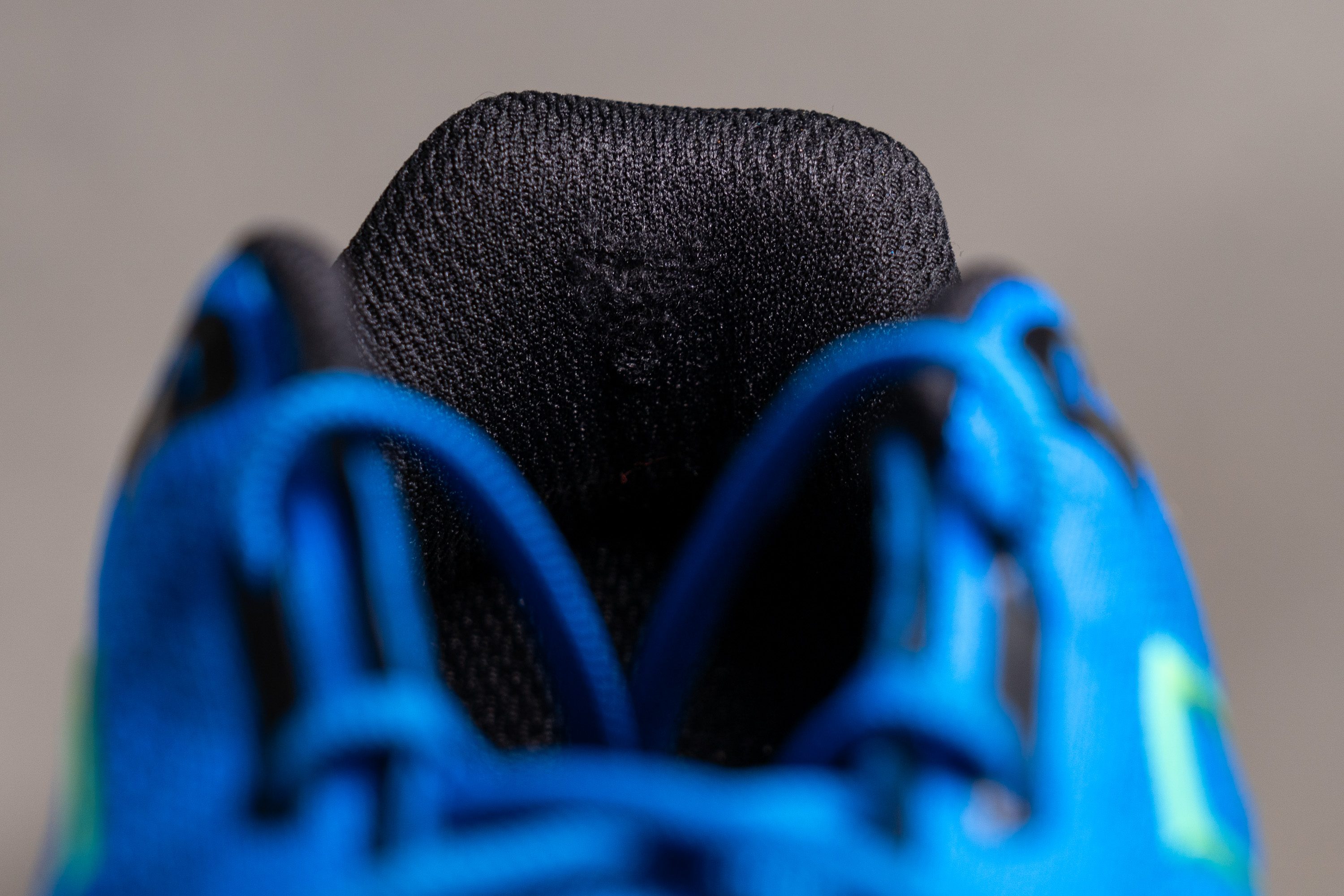
| Fresh Foam 680 v8 | 4 |
| Average | 3.4 |
Outsole hardness
After being really happy with the top part of the shoe, we shifted our focus to the bottom, specifically the outsole. Our initial test involved assessing the hardness of the integrated rubber outsole, which shares a design with New Balance's pricier 1080 line.

We discovered that the rubber is adequate, achieving a score of 83.6 HC in our durometer. This level of hardness is quite suitable for routine wear and offers decent durability.
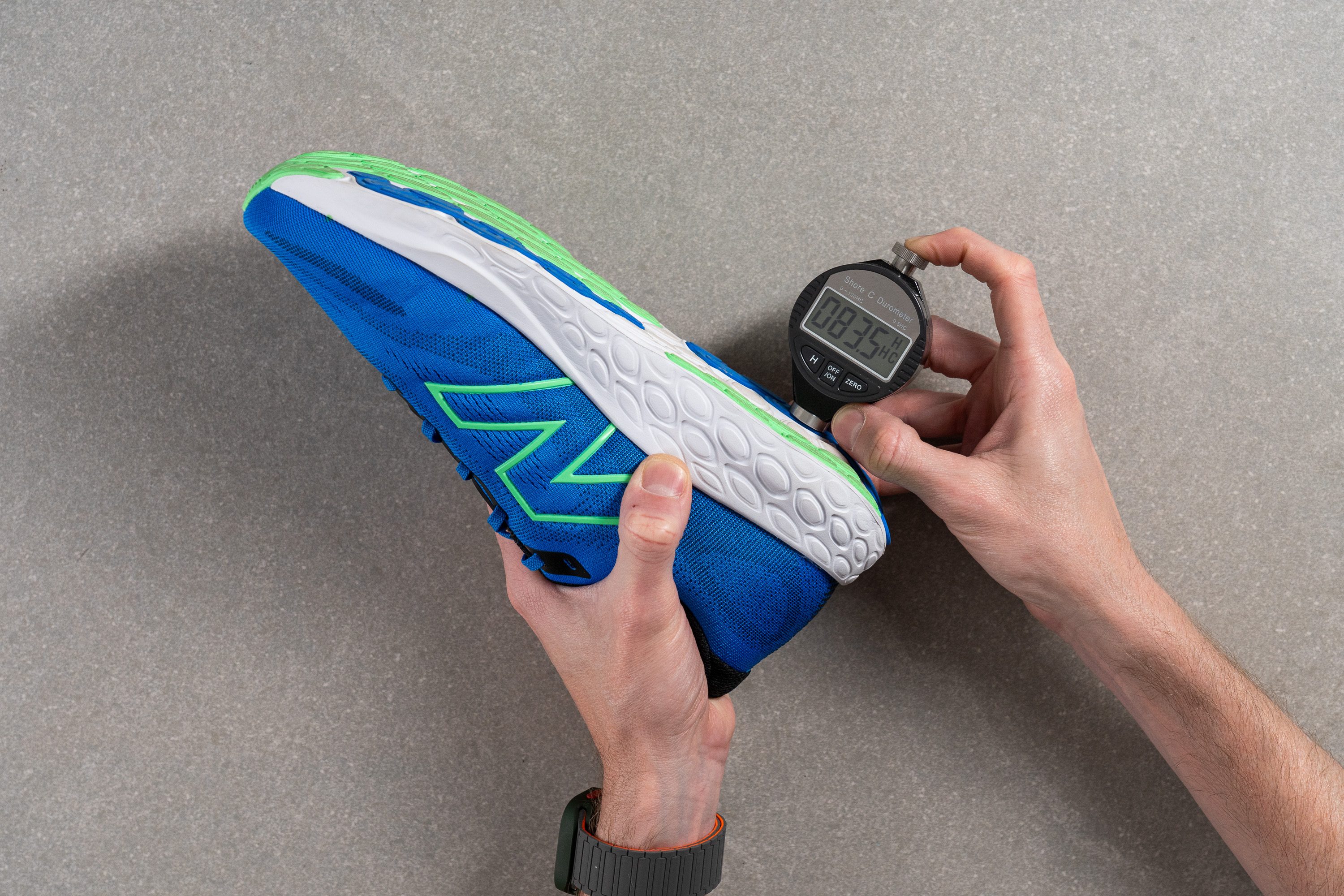
| Fresh Foam 680 v8 | 83.6 HC |
| Average | 79.2 HC |
Outsole durability
To determine if the above-average hardness ensures long-lasting durability, we conducted one final Dremel test in this lab review.
The results were outstanding—we observed only a minimal dent of 0.7 mm. This impressive outcome means good durability, enough for those who tend to wear out their shoes quickly.
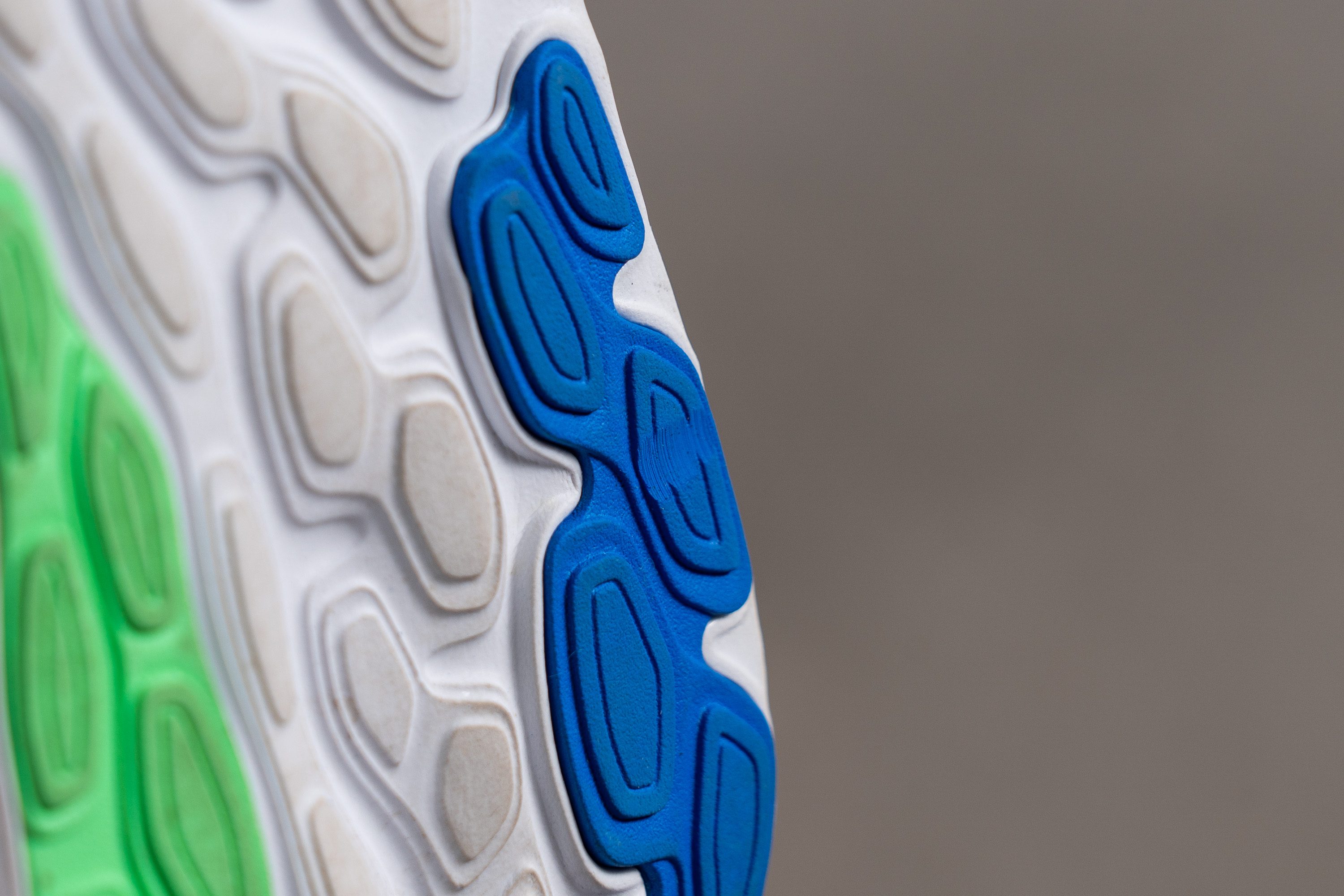
| Fresh Foam 680 v8 | 0.7 mm |
| Average | 1.1 mm |
Outsole thickness
We discovered that New Balance equipped the 680 with a substantial 3.5 mm of rubber—a bit more than necessary in our view, considering its durability. For the upcoming v9, a thinner layer could reduce weight and enhance the feeling of connection with the ground.
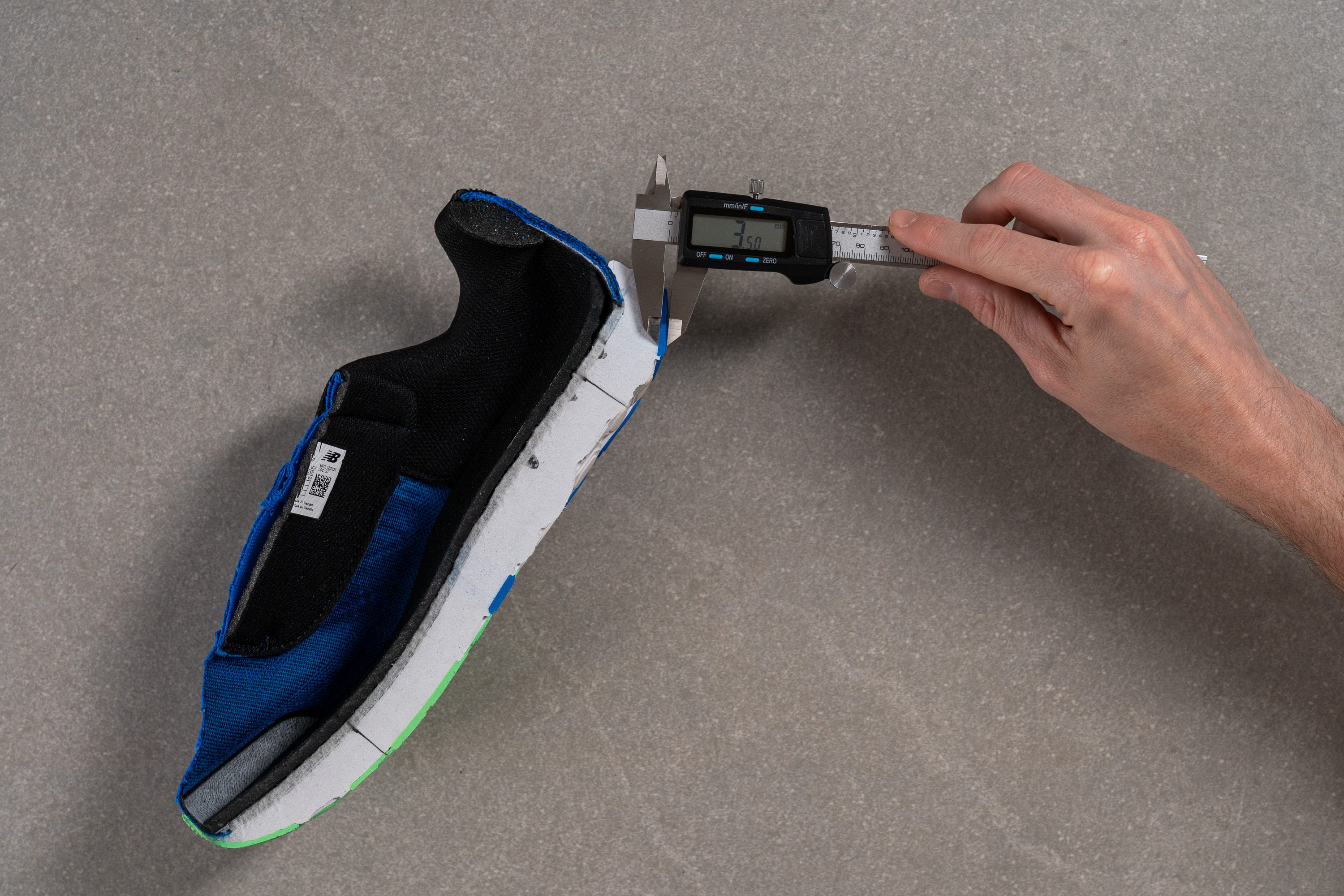
| Fresh Foam 680 v8 | 3.5 mm |
| Average | 3.2 mm |
Misc
Insole thickness
The basic EVA insole measures 4.7 mm in thickness, offering a feel that's consistent with most daily trainers on the market.
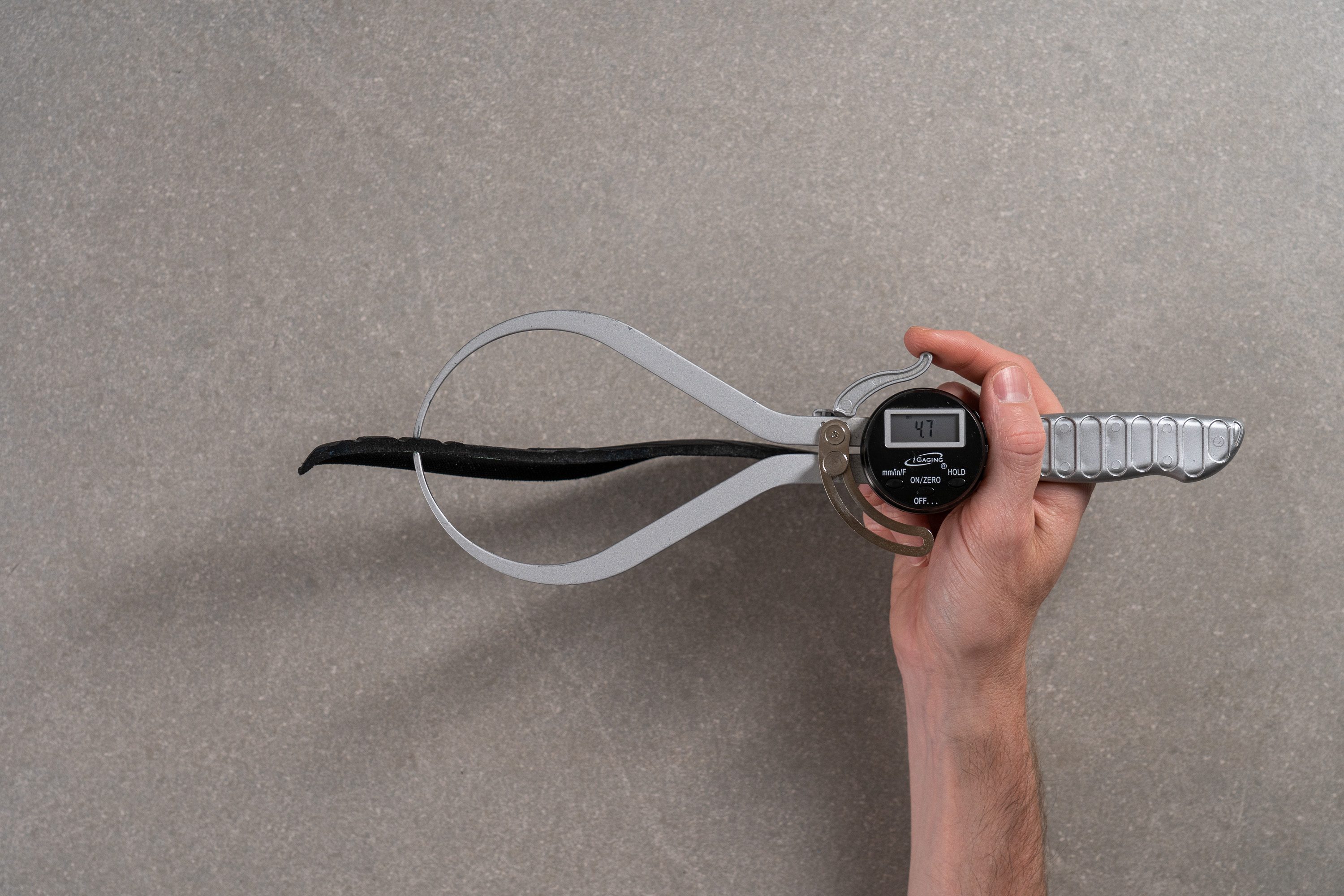
| Fresh Foam 680 v8 | 4.7 mm |
| Average | 4.5 mm |
Removable insole
Looking to use custom orthotics or a third-party insole? No worries—we found the stock footbed easy to remove!
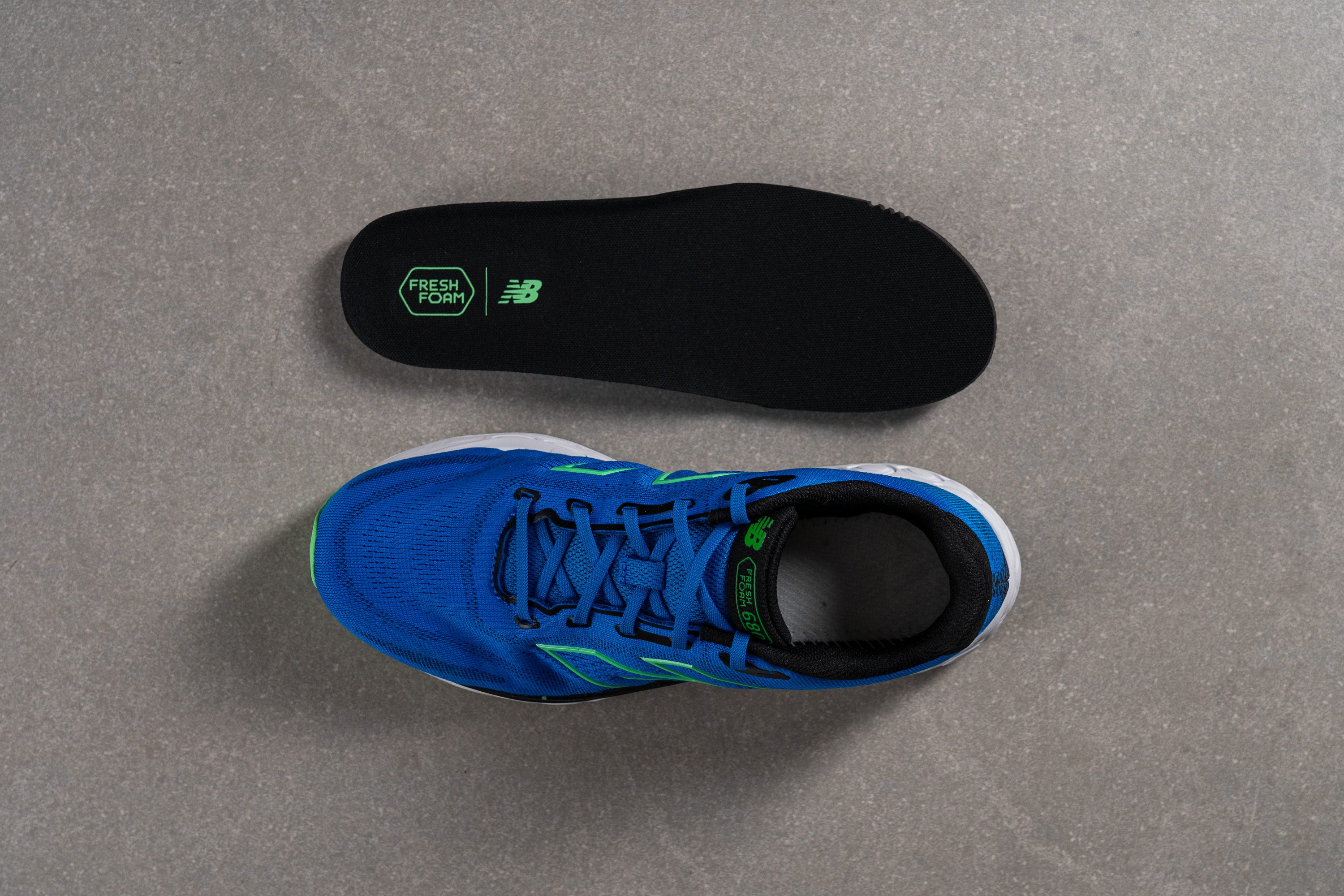
| Fresh Foam 680 v8 | Yes |
Midsole softness in cold (%)
While Fresh Foam offers comfort and decent energy return, it's still made from EVA, which typically underperforms in cold temperatures. This was confirmed during our test: after 20 minutes in the freezer, we observed a significant 40% increase (22.8 HA).
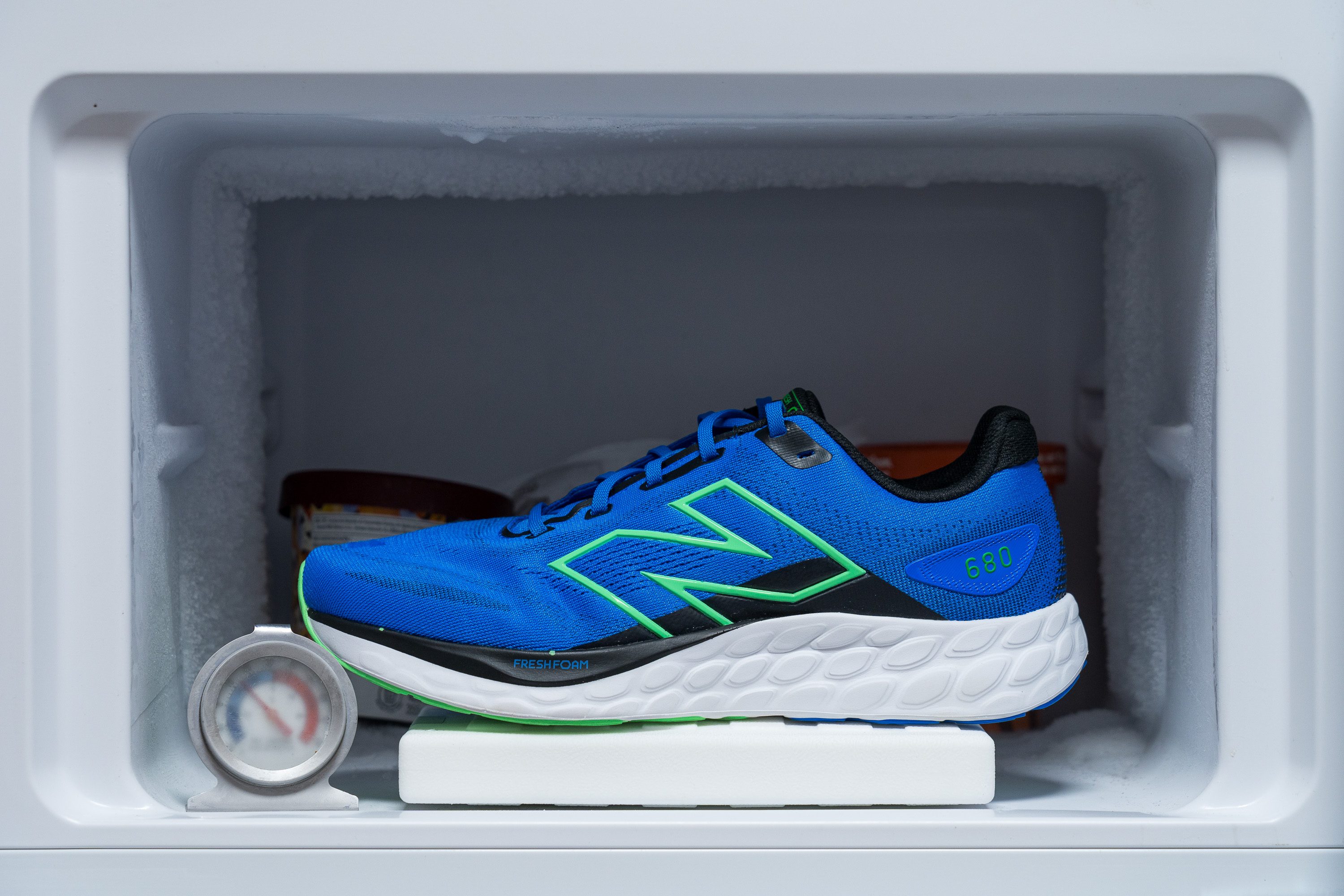
| Fresh Foam 680 v8 | 40% |
| Average | 24% |
Reflective elements
The absence of reflective elements in the 680 might be a concern for some, but we believe it’s important to be realistic—reflective features are rare in budget-friendly shoes. In our view, this isn’t a major downside, especially considering the price point.
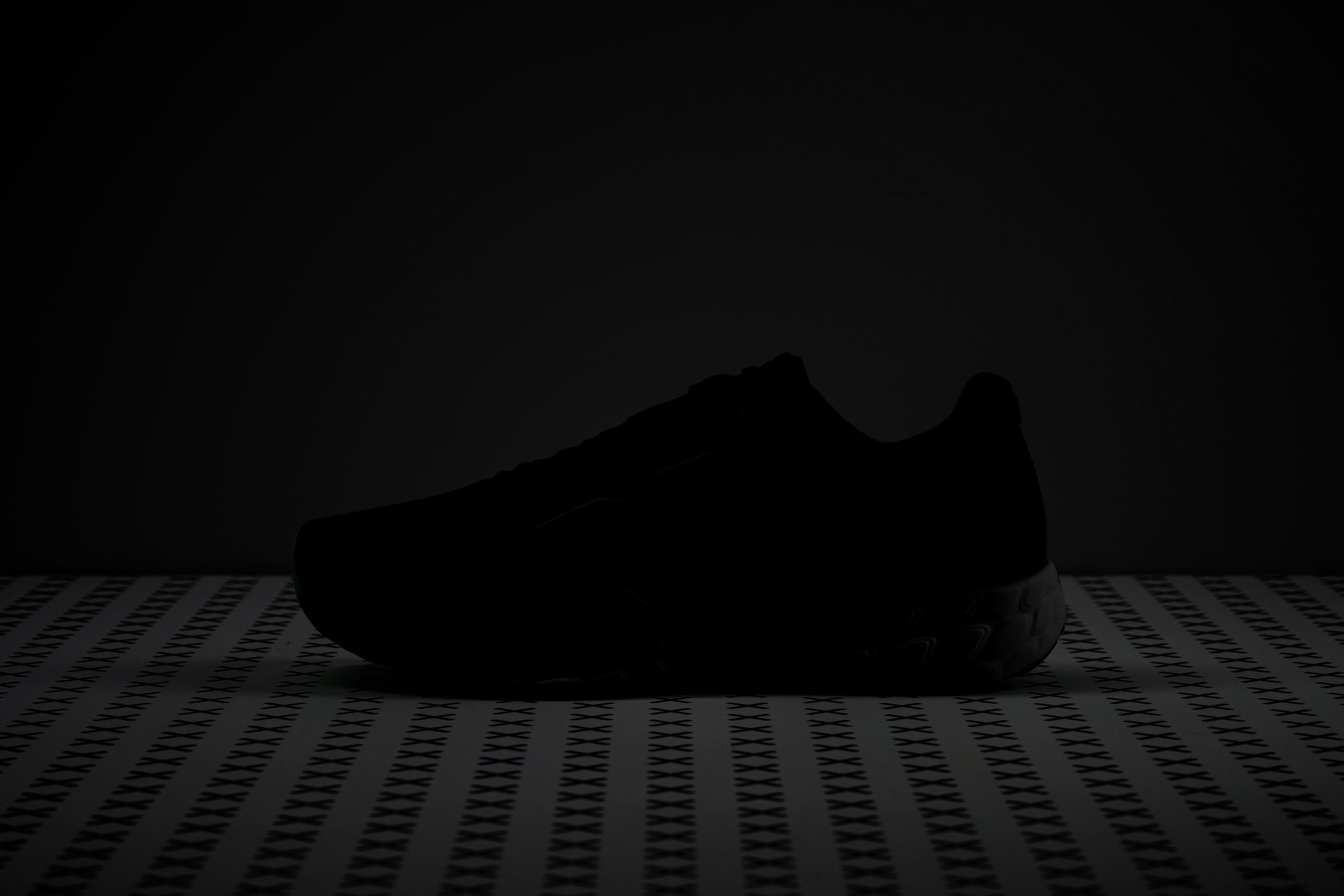
| Fresh Foam 680 v8 | No |
Tongue padding
We believe that the perfect tongue for a daily trainer should strike a balance between thickness and comfort, and that's exactly what we discovered in the NB 680 v8. Measuring just 6.4 mm, this tongue is among the best we've encountered in entry-level running shoes—offering just the right amount of padding for a comfortable and secure lockdown.
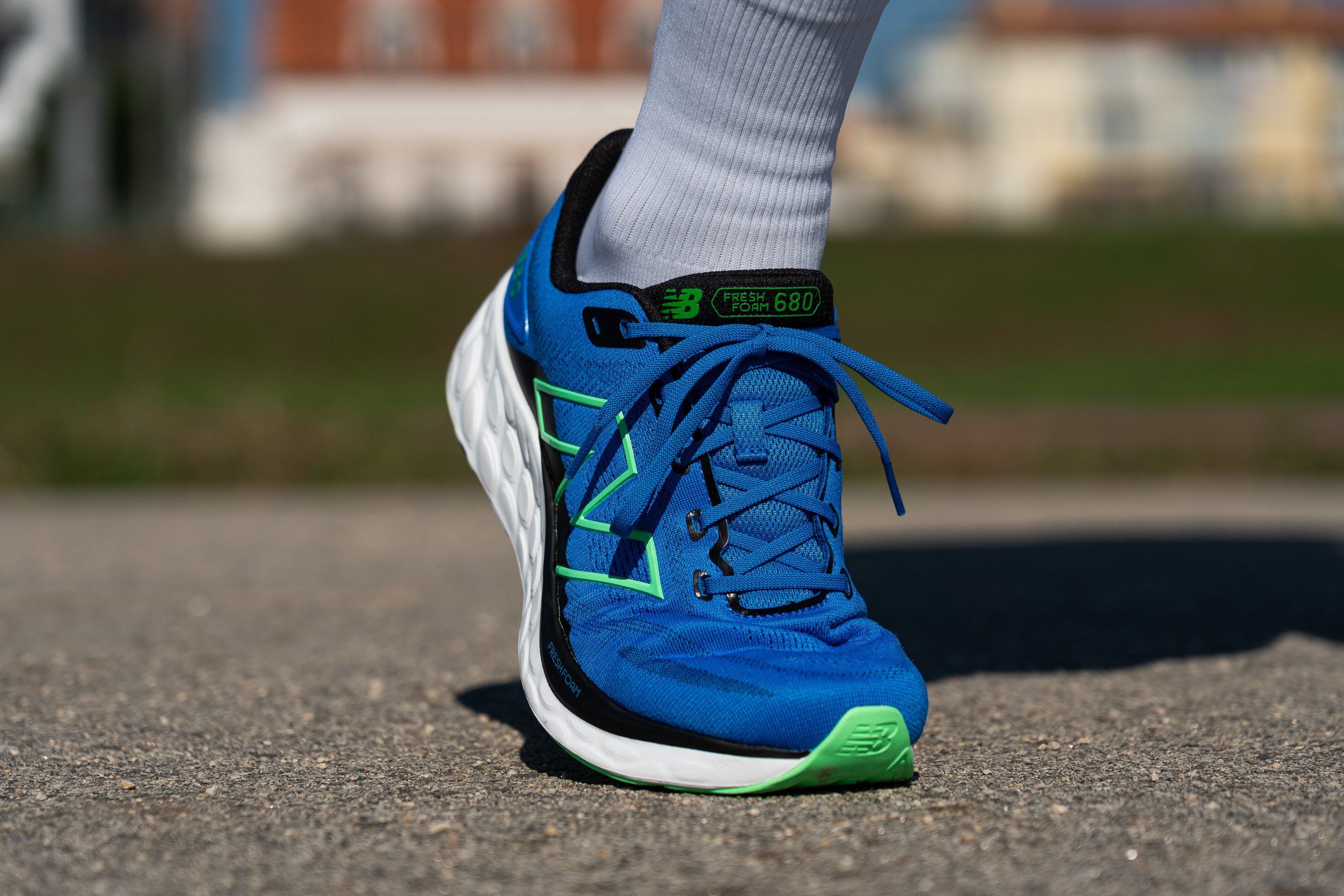
We also found a tongue loop that helps keep it in place (essential since it's not gusseted), and we appreciated the simple, punched eyelets, along with an extra set for those who experience heel slippage.
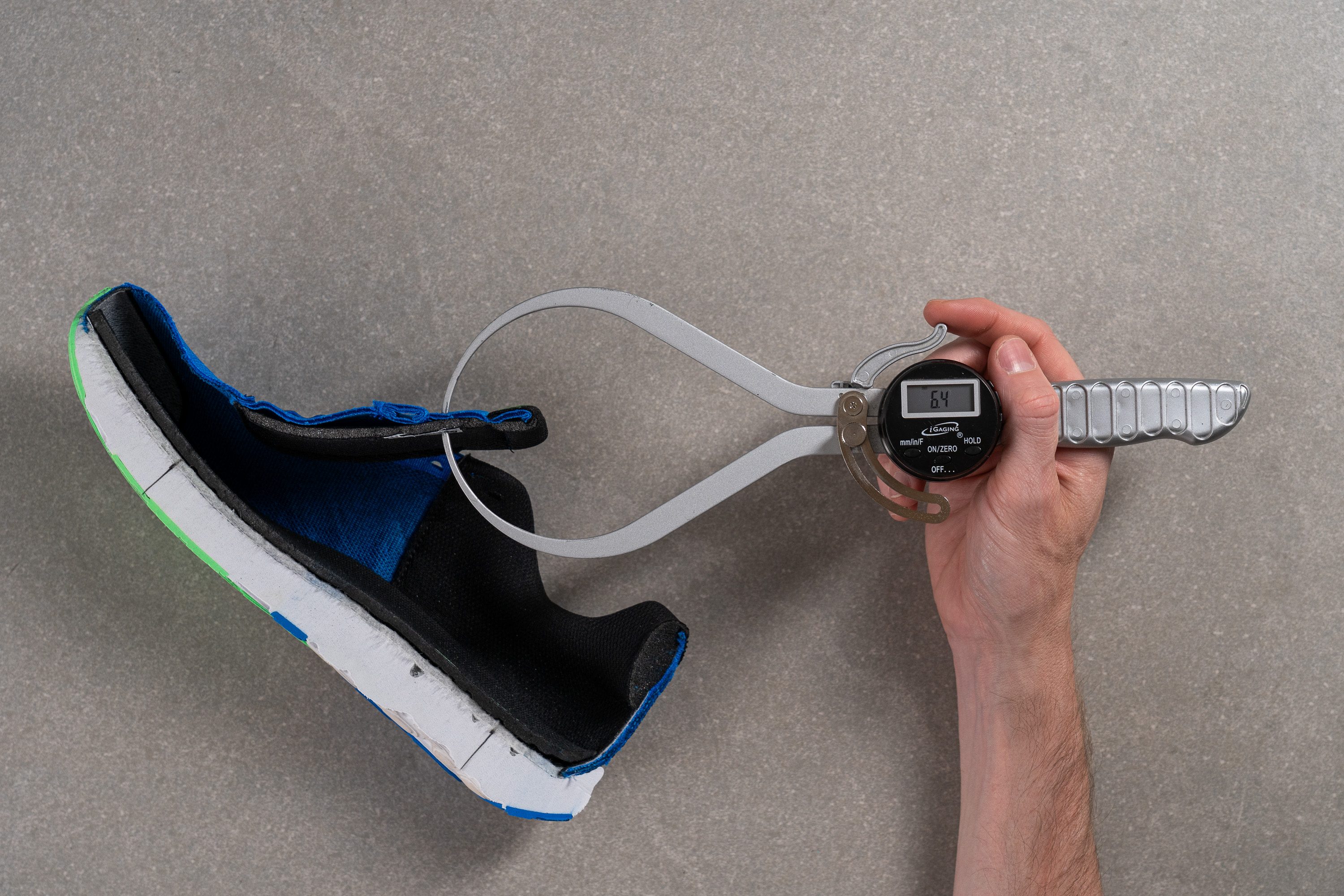
| Fresh Foam 680 v8 | 6.4 mm |
| Average | 5.8 mm |
Tongue: gusset type
The tongue isn’t gusseted, meaning it’s not attached to the sides, so there’s a chance it might shift during use. Nevertheless, we’ve noticed this is typical in budget-friendly shoes.
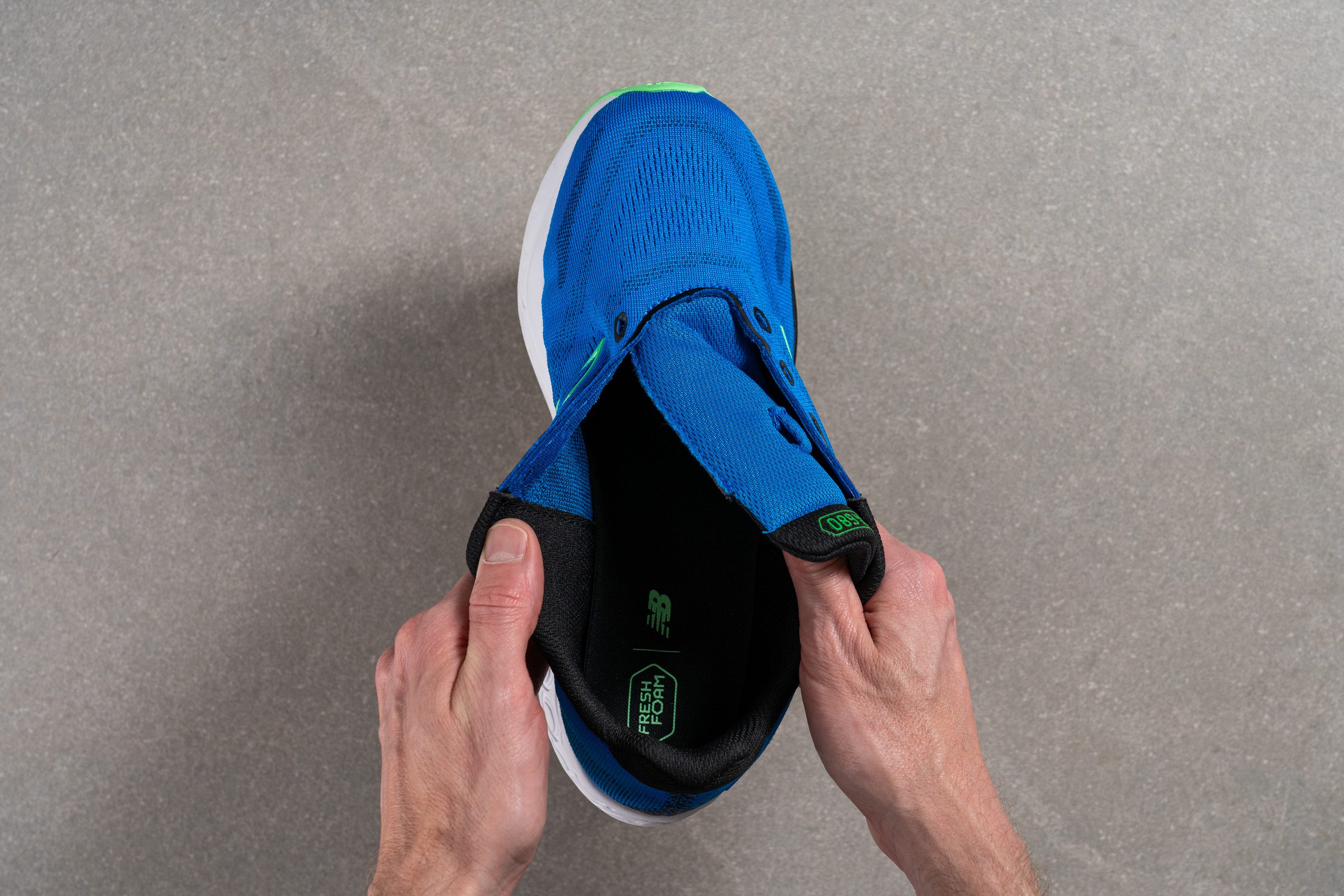
| Fresh Foam 680 v8 | None |
Heel tab
The 680 heel lacks a finger-loop tab, but New Balance added a few details, including a small reinforcement at the top of the collar and a subtle "680" plastic piece that doubles as an external heel counter.
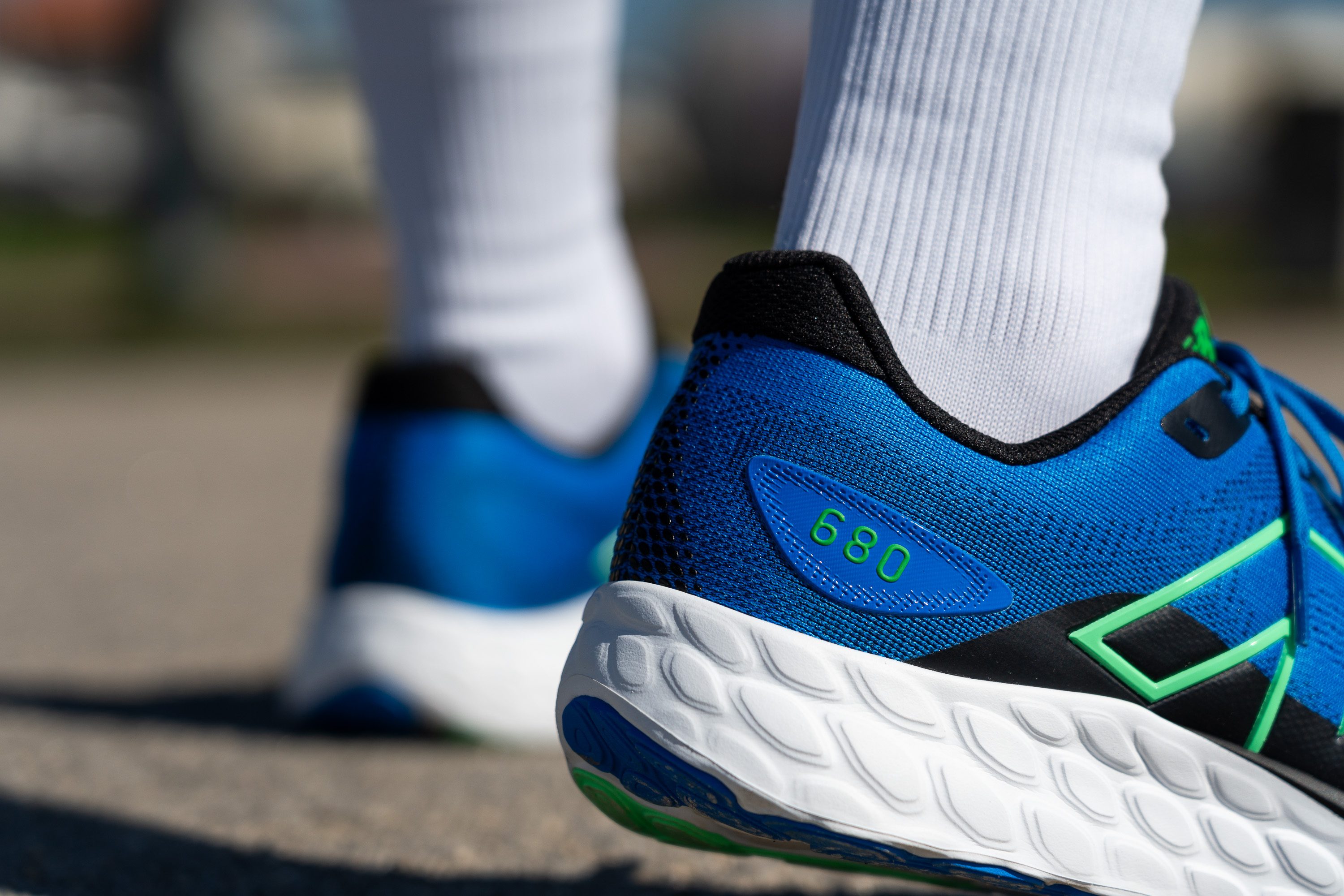
| Fresh Foam 680 v8 | None |

